#on a meta level is more of an embodiment of the dark side itself
Explore tagged Tumblr posts
Note
12. Antagonist you absolutely cannot sympathize with

hint: it’s one of these two
send me a q and I’ll draw the a
#Anakin Skywalker#Darth Vader#sheev palpatine#this is an easy answer i know#but sympathy comes pretty easy to me i have at least some sympathy for most every character#even if i don't agree with their actions#ol' shevvy on the other hand#while a great villain and thus a great character#on a meta level is more of an embodiment of the dark side itself#and the darkness inside each and every one of us#that we can choose to surrender to or to fight#the collective evil of humanity itself#he's not meant to be sympathized with#also he ruined a perfectly good sand baby and i'm still mad#also this looks suspiciously like an au where anakin lives long enough#to have to go with luke#and face leia#good luck anakin#star wars#fanart
304 notes
·
View notes
Text
Astarion Analysis
Disclaimer Game Version: All these analyses were made up to the game version v4.1.101.4425. As long as new content is added, and as long as I have free time for that, I will try to keep updating this information.
“Morals are all well and good, but power always wins.”
“If all I want is shallow praise? Hardly, there is also gold, sex, revenge, quite the list, really. But failing any of those, I will always settle for shallow praise.”
--Astarion
The majority of sources used for this article are in the game itself (including Astarion-solo playthroughs) and the dev’s notes and datamined information provided by pjenn. Astarion as origin is (almost) not taken into account since it’s not finished and is highly unpolished.
The itemised list will show some instances of approval or disapproval as seen in the game. To make the reading of this article easier and shorter, you can skip them since they are basically the proof I use to sustain the introductory concept of each block.
We can infer a lot of Astarion by analysing what he approves and disapproves of. Sometimes, we can even lightly infer some information from his neutral reactions, but let’s be honest: this way of analysing a char is pretty poor since it leaves everything to speculation. Neutral reactions can only be analysed by contrasting the same situation in other contexts, and seeing what other options Astarion approves or disapproves of. With these considerations in mind, we can proceed to describe this character.
Disclaimer: this is a meta with my personal interpretation of the character, sticking as much as possible to the facts and leaving little to “desires” or “projections” of what I want him to be. If I do so, I will state it explicitly in the text for the sake of analysis honesty. I want to be clear about what is canon (facts shown in bg3 EA), from what’s personal interpretation with little proof.
Also, this list is extensive, gathering as much as I could in my many playthroughs, but I’m sure it’s not absolutely complete. Some details may have escaped to me, but honestly, I believe they will be easily fit in these blocks once the pattern has been seen.
Understanding Astarion by enumerating his reactions
Astarion is usually seen as a character whose behaviour is the embodiment of “randomness”, and after several Astarion-solo playthoughts, I began to see the patterns that showed little randomness in my opinion.
We can say that he likes gratuitous cruelty and murder. He has a special taste for animal cruelty too. He is greedy, but mostly if it leads to murder or to make little people suffer. Sometimes this greedy side comes from the fact that he doesn’t like to “work for free”: most quests should have a reward for him to be neutral to them. Accepting them without asking anything in return tends to earn a disapproval. He is more reticent to humiliate or outsmart NPCs that may be potentially stronger and more powerful than him.
[[1]] Situations showing his greed:
He supports the robbery of the fishermen that were helping the mind flayer (MF) after the crash.
Astarion supports stealing the “magical” ring from the tiefling kid (Mattis). This could be seen also as a gesture of outsmarting a person or mere trickster behaviour (see below).
He supports asking for compensation from the deep gnome we saved at the windmill.
He agrees to force Tulla (dying gnome in the myconid camp) to give you her magical boots.
Denying Baelen the scrolls because “they don’t come cheap”.
He approves pickpocketing Mirkon while being lured by the harpies.
[[2]]Situations displaying plain murder or violence:
He supports joining Lae’zel against the tieflings if you persuade them to free her, since this means killing (which is always an entertainment for him) creatures he considers lesser.
He supports killing Gimblebok and his gang near the Jergal ruins if you avoid any attempt of persuasion. This can be shown as a demonstration of power. (see below)
He supports killing Kagha without trying to persuade her or change her ways, not because he thinks Arabella’s death was an aberration (he enjoyed the show, as his approval and later comment confirm it) but simply because he enjoys murder.
He supports attacking the goblin camp. It’s a great spectacle of murder combined with his personal dismiss towards goblinoid races.
He approves of joining Minthara and massacrating the tieflings. It’s another great spectacle of murder, but in this time, of weak people (He detests weak creatures, and despises Tieflings in general).
He approves of killing Lae’Zel in the scene where she attacks Tav during the night, out of fear of turning into MF.
He approves of killing Rugan in the hideout.
Still related to this level of violence and cruelty, he supports learning more about Shar once Shadowheart explains Shar’s teachings, all about violence and death, fighting against the illusion of safety.
He approves killing Ellyka, the tiefling spying on the Gith patrol, if Tav is a Githyanki (true or disguised as) and chooses “Attack.”
He approves of helping Glut in massacring the whole Myconid colony.
He approves of sacrificing one of the companions to the fish-people who worship Booal.
He approves fighting the fake god Booal because it’s a massacre; where there is bloodshed, there is Astarion’s approval.
For the same reason he approves killing the Githyanki patrol: pure bloodshed.
[[3]] Situations of gratuitous cruelty: I understand that a lot of people confuse this trait of his personality as a “trolling attitude”. There are different archetypes of tricksters in DnD, and he is not particularly the silly-funny one (e.i. Jester in Critical Role), but the cruel-funny one. His “pranks” don’t cause annoyance or silly troubles, they usually end up in murdering the person he is pranking, or causing them great pain. What he considers “funny” is always related to a lot of blood and suffering. Examples of this:
He disapproves of diffusing the situation between Aradin and Zevlor after the first goblin attack. He is “missing” his show. This situation is also related to enjoying humiliation of others (see below).
After letting Arka kill the goblin and take her revenge, Astarion will approve the comment that refugees are desperate and they will do anything. He is enjoying the show of despair of weak creatures. And he is also expecting for some of them to become survivalist beasts.
He approves of telling Kagha that you enjoyed the show of Arabella’s death as an answer to her question about if she is a monster.
He also approves of telling Arabella's parents that Kagha will release their daughter when the Rite of Thorns is completed (while Arabella, in fact, has been killed by Kagha's snake). This is another example of Evil Trickster, a prank with a really dark taste. This also shows that Astarion likes to give false hopes [One of the most iconic characteristic of Cazador]
He approves of telling the tiefling kids training with Wyll that they are going to die, inspiring that despair he enjoys to see in weak creatures. (see below)
He approves of breaking Alfira’s teacher’s lute, leaving the tiefling heartbroken because that had been the only memento she got from her teacher, and could not finish her tribute song.
Astarion approves of interrupting the goblinoid couple having sex, which he considers disgusting. After killing them, Astarion will support the idea that it was funny. Another example of Evil Trickster where the prank ends up with the death of the pranked one. But we also know Astarion despises goblinoid races.
He approves of killing Crusher after humiliating him.
He supports Tav who volunteers to torture Liam at the goblin camp.
He supports of laughing at Lorin (the elf trapped in Ethel’s house) after pretending to be the monster he sees (psychological torture). This example can be part of the list of humiliation too.
He states that seeing Mayrina’s horrified face after resurrecting her husband was funny. Another example of false hopes [One of the most iconic characteristics of Cazador] On the contrary, if Tav kills the undead afterwards, Astarion will disapprove, since he missed the “fun” of seeing Mayrina tortured.
He enjoys every state of Abdirak’s torture upon Tav. This can be seen as a fine bloody show he is enjoying, or as a way to put Tav in a humiliating situation (as he approved the dung-smearing or the foot-kissing instances)
Using the leader gnoll Flind to attack her own gnolls earns his approval. Asking her to devour herself increases approval once more. This situation could also be seen as enjoyment of animal cruelty (since gnolls are considered animals by Astarion too) but also as the reflection of Astarion’s inner desire of becoming a Master of bending wills.
Probably the most innocent prank so far we saw, he approves of doing Baaa at the redcaps in the Bog.
[[4]] As I said previously, he suports any form of animal cruelty:
He approves of kicking and killing the squirrel Timber in the Druid Grove. According to the dev’s notes, he is “shocked and annoyed” because “you stamped a squirrel to death when he could’ve eaten it.” (DEN_General_Squirrel)
He supports prodding to death the bird that Nettie was healing during the dialogue (you need Speak with Animals for this).
He supports freeing the Owlbear cub at the Goblin Camp, and feeding it later, because he wants to bite the owlbear cub eventually (he uses the word “delectable” to describe him, and when the owlbear escapes, Astarions states “You‘ve scared off the little snack.”)
When we find Halsin in his bear form, Astarion will have two instances of approval: the first one when Tav tells the goblin kids that throwing stones with sharp edges would hurt the animal more, and then when Tav themself joins the goblins in throwing rocks at Halsin.
We can also add the confrontation with Flind, the Gnoll leader, as another example of animal cruelty since he approves a smart yet twisted way of killing her by double-using the tadpole. First to command her to attack the gnolls, and then to devour herself. However, since Gnolls are considered aberrations lore-wise, this point could be left aside in this particular case.
If we take into consideration that Astarion sees Goblins, Kobolds, and Gnomes as animals, killing them always increases his approval. This happens when we kill, out of the blue, most goblin NPCs, or simply attack the camp. (Datamined content) He will also approve of killing slave gnomes in Duergar Encampment (place you find after the boat). All these moments can be also seen as “animal” cruelty if we take into account Astarion’s perspective.
He approves of killing Priestess Gut in the Goblin Camp. It could also be interpreted as his usual dismissal towards goblins (he sees them as animals), since he never believed that she could help them in the first place. Or this approval can fit perfectly fine the cruel, murderous aspect of Astarion. As I said, many approvals overlap different aspects of Astarion, but all seem to fit his patterns either way.
I suspect that the reason behind this particular kind of cruelty comes from those two hundred years of torture, in which he had to drink animal blood. Considering he was such an unfair magistrate, directing his rage against the ones who are not the root of the problem seems fitting.
[[5]] Astarion is filled with racial bias and prejudices.
He only sees elves and humans as the only creatures capable of thinking. (Scene after the bite)
However, he has strong biases against a particular ethnic group of humans: Gurs. He thinks they are all cut-throat, and probably would approve the rest of stereotypes that Gandrel added in that scene. (Scene of meeting Gandrel)
He mocks halfling and dwarf Tavs, who he thinks are naturally weak, until they prove him wrong. (Stargaze scene for short-sized Tav)
He supports the idea that tieflings have demonic powers just because of their heritage. (Speaking with the Grove halfling seller). During the party, he compares the lives of the tieflings with the lives of the goblins as something of similar value (which we know he considers as animal).
He sees goblins, kobolds, and gnomes as animals. (Scene after the bite)
After killing the goblinoid couple which was having sex, if Tav choose to say that the situation made them scrub their eyes, Astarion would add and extra “dehumanizing” comment against gnomes. “I’ve seen worse. Gnomes can be… ughh.” (Scene of interrupting sex)
[[6]] He finds pleasure in humiliating people or in outsmarting them, especially if they are trying to outsmart Tav. He dislikes weakness and loves to humiliate weak people in particular.
He approves telling Lae’Zel to say “please” when we met her again in the cage, humiliating her.
He disapproves of diffusing the situation between Aradin and Zevlor after the first goblin attack. We know he is “missing” his show where one of them is being humiliated.
Astarion approves of telling Elegis that she is pathetic for being scared of a few goblins. Once more, humiliation due to weakness.
He disapproves of telling Arabella's parents that the Druids overreacted when speaking in the Druid Grove’s stairs. He is disapproving for defending a weak and silly creature who was not smart enough to survive on her own.
Astarion supports stealing the “magical” ring from the tiefling kid. This is another situation of humiliation of a weak person and outsmarting them. This could be considered a prank of a more silly-funny trickster doing an innocent prank.
He approves of telling the tiefling kids that they are going to die.
He feels disappointed when Lae’Zel did not kill Zorru, the tiefling that she forces to kneel and confess where he saw the Gith patrol. He approves the psychological torture of the interrogation.
He enjoys interrupting the goblinoid couple having sex. This is an example of the prank cruel-funny trickster. This “prank” ends up with the goblinoid couple being killed.
Astarion approves of smearing dung in the guard's face at the goblin camp entrance. The show of seeing someone being humiliated is satisfying.
He supports booing and humiliating Volo off the stage in the goblin camp.
He supports licking the goblin’s foot (It could also be considered a prank).
He supports kissing the goblin’s foot while stealing the ring. This situation puts two things he enjoys in the same place: the humiliation experienced by Tav and how the Crusher was outsmarted in the process. Astarion will approve if Crusher is the one humiliated and forced to kiss Tav’s foot.
He approves of laughing at Lorin (the elf trapped in Ethel’s house) when the elf is scared of Tav who pretends to be the monster that’s torturing him.
Humiliating “low people'' is an important aspect of Astarion’s personality, since it’s a small petty pleasure he can have now, when during the last two hundred years it had been done to him. Humiliation has to do with power as well, another symbol tight to Astarion’s personality. Through humiliation Astarion can taste a little bit of power, that power he lacked for two hundred years. That power that, if his backstory is not retconned in future versions or in the full release game, he had before turning into a vampire, abusing those groups he considered less.
[[7]] If we think in power, we also have to think in manipulation. And of course, Astarion is a great master of it. Sometimes the events that stand out his taste for manipulation overlap with the ones displayed in the humiliation section.
Since the moment we meet Astarion, we know he keeps working in turning himself into a pleasant and useful companion for Tav. Astarion knows he has bigger chances to succeed and survive staying with this group. A lot of his “neutral” behaviours respond to this goal: he doesn’t want to enrage Tav to the point of being kicked out of the party, it’s not about a hidden gentle side inside he is showing with an apathetic neutrality, it’s, once more, raw preservation and survival. During the first scenes of the game, when we don’t know he is a vampire, Astarion tries to avoid taking a position in the situations we face: he is just feeling the ground all the time: with Sazza and with Arabella’s death is clear. He doesn’t judge hard, he is testing Tav, he is trying to understand their mind, and acting as pleasant as he can according to what he sees. It’s a natural use of manipulation to guarantee his survival in a group of strangers. During the bite scene—when this façade finally ends—he is truly nervous of being killed for his vampiric nature, and tries to convince Tav of keeping him in the group using arguments that go from seduction to practical usefulness.
The scene of stargaze also shows his usage of seduction as a manipulative tool to guarantee his survival (he weponises seduction and sex). Although he says mostly the same, he reacts very differently in tone depending on Tav’s approach. If Tav is wary, Astarion will act encouraging their ego and enumerating several feats, while getting uncomfortably closer. If Tav is already interested in Astarion, the elf will use softer manners to keep the seduction into a more intimate tone. This is a scene of a predator tasting his future prey as well (Dev’s notes are pretty clear about his manipulation). In this scene, also, Astarion is light-headed because he has not drunk blood in a while, and has “his head foggy” (something we can repeat during his origin as a personal tag). Exact words he will use as a narrative hint during the bite scene. Therefore, this scene has little of “Astarion falling for Tav”, and has everything of vampiric hunger combined with a raw sense of survival and usage of seduction to guaranteed it.
(potential interpretation) He approves when he is persuaded into sharing his dream with Tav. In any other character, we usually would understand this as an approval for caring about the character himself. In that scenario, failing the approval doesn’t cause a penalty (unless the character understands this failure as prying, as it happens with Shadowheart). In Astarion’s case, when you fail this persuasion, you are penalised with a disapproval. We can understand this in the same way we see it with Shadowheart: this is his annoyance for prying into his personal business. But there is another interpretation in this disapproval: he recognised a bad execution of persuasion as a manipulative attempt, and Astarion is in particular very sensitive to manipulations and mind games (see point [12]).
Most of his “romance” is manipulation as well, keeping in mind the first point of this section: he becomes pleasant for Tav, using whatever shape he needs, so he can survive (this is especially noticeable with a good-aligned Tav). Astarion has weaponised seduction and sex without any hint of subtetly for the player (As the Dev’s notes say: “For Astarion, this is a game of power - one he’s played many times before in the taverns of Baldur’s Gate, trying to lure people back to his master. He’s an old hand at seduction, very self-assured at first, but the player might not go along with the script he expects them to follow.”) We can assure that Astarion will find more satisfaction in having “fun” with a high-approval Tav rather than a low-approval Tav.
If Tav is not evil enough (and therefore has a low approval), Astarion will need to be the one inviting Tav to have sex (to be sure the control is still in his hand, still pushing for ��catching” Tav). If a low-approval-Tav invites Astarion, he will decline saying that he “has standards'', implying he needs to be the one controlling the situation (he is basically playing “hard to catch”. Astarion already knows that he “caught” Tav in this scenario since Tav was the first one showing their interest). If Tav is evil-like (and has enough approval), Astarion will not only weaponise sex, he may express some degree of personal desire in having “fun” with Tav. After all, evil characters can like one another. In this case, he would accept Tav’s invitation for more hedonist reasons such as personal pleasure and not mere survival. Still it’s always present the layer of using this situation as a manipulative tool to have control on Tav.
Approves persuading Crusher without a fight, understanding it as an approval earnt for the good manipulation tool used. Of course this scene is combined with the natural approval that Astarion gives when outsmarting creatures he considers lower or animal-like (See point [6]).
Successfully persuade Lae'Zel to "play along" when meeting the Githyanki patrol, and pull off the deception.
I personally found funny that Astarion, without the intention of the writer, is so good in his manipulations, that he broke the fourth wall and ended up manipulating a good amount of players as well into believing him.
[[8]] He supports revenge in all its forms and degrees, which is not strange since it’s his main motivation against Cazador.
He approves of letting Arka kill Sazza in the cage as revenge for her brother’s death.
He approves of the attack against Nettie when she poisons Tav.
He approves of telling Edowin's siblings to find the beast that attacked him as a way to avenge the True Soul.
Astarion approves of Arabella’s mother killing Kagha at the party.
He approves of helping the Sovereign to take revenge against the Duergars that killed their young. However, it’s not clear if Astarion approves the revenge itself or the method proposed, which is, according to his own words, “a bit genocidal” and therefore more entertaining for him (we need to remember he enjoys the display of murder and violence in all its forms, [2,3]).
He approves of helping Glut in massacring the whole Myconid colony, since according to Glut’s words, they saw Glut’s circle being killed by the Duergars and did nothing, so Glut is looking for revenge.
[[9]] He doesn’t like to get involved in anyone’s problems unless you can obtain a benefit or a reward for it (this is directly connected to his greed aspect [1])
He approves of telling Mayrina’s brothers that they are on their own, and actively disapproves if Tav agrees to help them find Mayrina.
He approves of declining to help Halsin in killing the Goblin leaders.
He disapproves of helping Wyll to save the Tiefling refugees in the Grove.
He disapproves of helping Zevlor.
He disapproves of finding evidence that confirms that Kagha is working with Shadow Druids. He will additionally disapprove again if, after exposing her, Tav asks her to change her ways. From Astarion’s point of view, Tav is basically meddling too much in the Grove’s problems for free, and ruining all the instances where murder could happen.
He also disapproves if Tav agrees to help the two Zhentarim humans that are attacked by gnolls without asking for compensation.
He approves of not getting involved in the rescue of the Duke when Tav speaks with Florrick
[[10]] Despite having been a slave, he lacks of empathy for those who shared his fate and, instead, he supports slavery:
If we take into consideration what Swen said about his background in one of the first playthough he showed, we know that Astarion, as a magistrate, used criminals as food for local vampires, and in an attempt to outsmart them, he began to sell them into slavery (we can see in this brief background that Astarion has been greedy and cruel before turning into a vampire).
Although he disapproves paying for Oskar, the painter in the Zhentarim Hideout, he does it because of the money. When Tav buys the painter and demands him to stay silent because “slaves should speak when they are spoken to”, Oskar will think this is a joke (which is not the case, since none of those options has, in this patch at least, a (performance) tag). When Tav reinforces the idea that this is not a joke, and Oskar is now a true slave, only then, Astarion will approve.
When seeing one of the servant Duergars of the Myconite Colony, Astarion will comment on how useful they are, and how Underdark drows should learn about these creatures, since these slaves are more efficient than the standard ones. If Tav brings awareness about the contradiction that those thoughts cause coming from an ex-slave, Astarion will justify his thinking saying that they are husks without mind, claiming that his feelings “may be different, had they been conscious beings. Or maybe not.” He emphasises in this dual possibility. And we can be sure that he certainly would not care slavery on conscious creatures, as we confirm it later with Oskar (A human who is not a Gur, and therefore, a creature that Astarion consider thinking acceptable beings).
(Datamined content) When reaching the Duergar Encampment, once Nere is rescued, there is approval for killing the slave gnomes when the True Soul orders it. One can interpret that Astarion minds little for these slaves because they are gnomes, and therefore, animals.
[[11]] He looks for power and dominance, to have control over others and also as a way to guarantee his own freedom.
In the discussion after every dream, Astarion supports the use of the tadpole's power in every opportunity, dismissing their effects. He is thrilling for the ability of bending everyone’s will (curious note, this is one of Cazador’s characteristics most hated by him)
He approves of letting the Koa-Toes bow before them as the Booal's chosen. This scene can be understood as a typical prank of a trickster, but also as a taste for being adored as a master/entity with more power. This scene shows that he and Tav are placed in the “Master” position. This reinforces the idea that Astarion wants to be a Master/Cazador, eventually. (Check post about Astarion and Power 1 and 2)
If Tav claims that the worship to them as True Souls can be useful after letting Edowin’s siblings leave, Astarion will approve. He shows in every instance more delight for having Cazador’s powers, making emphasis in the mind control ability, again.
Astarion approves of keeping the Necromancy of Thay tome. As we see later in his scene, he believes that there is something powerful hidden in it that may help him against Cazador. He wants to muster all the power of any kind he can.
Astarion approves of sparing Auntie Ethel’s life when she surrenders during battle because she will grant them power in exchange. He wants to muster all the power of any kind he can.
[[12]] Astarion is particularly sensitive to mind control. His expressions and the tone of his voice against any type of mind control are filled with feral ire (video here):
He is angrily affected by the movements of his worm in his own head,
He screams against Ethel’s control when using the mask,
The insults at the harpies when he is lured,
The way he is annoyed by the telepathic spores in the Underdark,
He disapproves failed attempts of persuasion (understood by his character as failed, obvious attempts of manipulations).
And, potentially, this is the reason why he disapproves of Priestess Gut cleaning Tav’s mind.
[[13]] Because he likes power, he also likes the demonstration of power whether his own or his allies’, therefore he likes most intimidation options in general
He approves of intimidating Gimblebok and the gang near the ruins.
He approves of intimidating or provoking both Aradin and Zevlor at the Druid Grove.
At camp, when discussing preferred methods of death, he approves if Tav tells him "If I die, I'll take you with me." (after first picking "Try it and I'll spill your guts") . He also approves if Tav chooses a method of death (decapitation, knife, poison). Both options show resolve, strength, and freedom in deciding one’s fate. Since Astarion died at the hands of strangers, he values the freedom of choosing how to die. He will disapprove picking the option of letting others decide your death.
He approves if you intimidate the mirror into allowing passage.
[[14]] He is a survivalist character, and therefore, a lot of his approvals are related to elements that will guarantee his life, such as looking for his own freedom, the acceptance of his vampire nature, and the encouragement in looking for strong alliances or keeping alive strong individuals that can be useful as allies.
He approves of being accepted with his vampire nature and allowing him to feed on Tav’s blood. He keeps approving if Tav defends him during the exchange of opinions in the camp.
He approves if he has permission to feed on enemies.
He approves of killing Gandrel. This approval is also mere raw survival.
He approves if during sex, Tav allows him to drink their blood.
He disapproves of promising Nettie to take Wyvern Poison if you feel symptoms of the Tadpole, since it goes against his survival instinct.
When Lae’Zel is killed by the Gith patrol, he will state in banter that it was a waste since Lae’Zel was a powerful/strong specimen, so clearly he is lamenting the loss of a powerful ally.
Despite appreciating his freedom, he has explicitly stated that he “would choose servitude over oblivion any day”, showing how extremely survivalist he can be.
[[15]] He likes to find a solution to their tadpole problem using unconventional ways, or at least, using options that may lead him to the twisted solution he needs (which is not exactly being cured of the tadpole, but to control it, he certainly needs more exceptional means)
He approves of telling Auntie Ethel about the tadpole in the Druid Grove simply because she “looks lunatic”.
At first, Astarion disapproves of Raphael's invitation to remove the Tadpole, claiming that he would not change one master for another. However, when the situation starts looking dire, he will approve of the idea, because anything “may be better than Cazador” adding later that he “would choose servitude over oblivion any day.”
A bit contradictory when he was the first one claiming that Raphael used mind games similar to Cazador’s, games they know they have won before starting.
[[16]] He has a “soft spot” for helping people to escape their masters or killing/rejecting people that can be seen as Masters. However it’s requirement that those escapees could be seen by Aastarion as strong and capable creatures. He would mind little for creatures he sees as underlings. (Weak concept, seeing it with squinted eyes)
He approves of helping Karlach to get rid of the Tyr followers, since they are in fact working for Zariel, Karlach’s previous master. With all what Karlach explained about her past, she certainly qualifies as a strong person who is trying to get rid of her master.
He disapproves of Tav who tells Raphael that they would do anything to remove the Tadpole. This is probably resounding in Astarion: his past bad choice when he was at death's door due to the Gur attack and Cazador appeared to “save” him. He knows that going to that extent has poor results.
Astarion approves of Tav if they say that they won’t become Raphael's pawn (conversation in the camp after the encounter with Raphael). It’s true that when the other options narrow, Astarion starts to consider the possibility of changing a vampiric master for an infernal one.
This post was written on April 2021.
→ For more Astarion: Analysis Series Index
323 notes
·
View notes
Text
reylo in TROS: a long meta
SPOILERS AHEAD
WHAT’S GOING ON WITH REY AND BEN (1st/2nd acts)
We start the movie with a very different Kylo we left in The Last Jedi. Mostly because we see a lot of Vader in him. His relationship towards Rey is possessive and intense. He WANTS Rey whether she wants it or not. His whole persona reminded me of anakin in ROTS. (“the jedi turned against me, DON’T YOU TURN AGAINST ME). He’s demanding to high hell. This change is because:
1. Ben felt betrayed obviously after tlj, especially because HE KNOWS she wanted to join him.
2. Ben doubling down on the dark side because of this betrayal- if soft boi Kylo didn’t work, then the only option is demanding aggressive Kylo.
3. Such intense negative feelings from tlj are what drive people deeper in the dark side so seeing more Vader then Ben is expected.
Kylo is pissed and hurting. but he’s deep in love. You think he only wanted to grab that necklace? He’s angry but subconsciously is like ‘damn i really wish i could pull this girl into my arms and kiss her’ but he can’t- so he grabs her necklace instead. A move that is both childish, but sexually charged. Think the phantom ripping off Christine’s necklace in POTO. Kylo is peak phantom in these moments. He feels very much in control of his sexuality, compared to TFA when he was drooling on Rey and in TLJ when he was ‘accidentally’ shirtless.
Where’s Rey at? Rey is very clearly running away from her desires. She’s heartbroken that she couldn’t run off with her soulmate, but we see she’s upset that he regressed (‘serving a new master’). So our heroine is heartbroken, disappointed, but still loves her dark prince. Her anger at all of her conflict (not to mention the palpatine hoopla she has to deal with) comes out the most in her fights between ren. Remember, fights between Rey and Kylo are basically fights between themselves because of the soul stuff (I’ll get to that later). And Rey also attacks Kylo first. She’s defending herself against her own desires. it’s only when Rey heals kylo, she truly confronts that side to her- her desire to want to be with Kylo. Then she runs off because she’s scared to that staying with Kylo might cause the dark union she saw in her vision.
Both of them are obviously hurting so much, they trade hurtful blows to each other in the forcebond scene like to exes after a break up.
That’s roughly where our two stupid lovers are at in TROS. The real turning point of the way they view each other is the Death Star fight. As i said, Rey confronts her desire while healing kylo. The start of the healing that will take place throughout the course of the film between them. Rey is almost apologising to Kylo for obviously hurting him by denying her feelings but reasserts that Kylo is not worthy of her love. Ben is.
And Kylo is shocked. This is pretty funny to be honest. Ben Solo, a person he has called weak, has hidden away, thought he had killed, was the one Rey wanted? He’s still intensely in love with her, but we see the aggression and possession slip away completely- he lets her run off with his ship! He knows she has feelings for him. but Kylo can’t resurrect ben solo alone. Fittingly his parents help him out in one of the most beautiful scenes of the saga.
BEFORE I GET TO THE THIRD ACT WE NEED TO TALK SYMBOLISM, SOULS AND DYADS. STAY WITH ME
It is revealed that Rey and Ben are dyads in the force. one soul in two bodies. they are the other halves to each other. on an instinctual and spiritual basis, they WANT to come together, to join and be whole. but also, they ARE each other. That’s why they know each other before TFA, they recognise their soul in the other. And just meeting each other and being in each other’s minds ‘awakens’ this bond explicitly. Now that souls have met, they aren’t going to go to far away. Cue force Skype.
Personally, I believe the force created this dyad to make sure that there is balance. The dyad is made once Rey is born and by this time Ben has probably been groomed by palp for a while. the force recognises this and splits the soul of ben and placing it in someone so firmly placed in the light, tethering him to the light. but also Rey has a tether to the dark. B A L A N C E. Even though palp corrupted ben, it was only ever one half, the promise and potential of ben to come back to the light was forever there once Rey was born.
But also on another level, the force is finally bringing balance between the Jedi and the Sith. It wasn’t a fluke that the descendent of the most powerful Sith Lord was linked to a Skywalker (a family emblematic of the Jedi). The bond also ensures that healing can finally take place between these two factions as these two souls will need to inevitably join at one point.
So to recap, for my sanity, Rey and Ben share the same soul, spiritually they are the same person. The dyad represents balance by placing on half of the soul on the dark side, one of the light. one with the descendent of most powerful jedi, one with the descendent of the most powerful Sith. The two halves will forever be seeking union, meaning these two halves will also be seeking balance- most importantly- IN THE LIGHT.
Balance isn’t grey jedi. Balance is balance on the light side- ALWAYS. Which is why it’s when Ben Solo has been groomed by the dark side, the dyad connection, tethers him to the LIGHT. Rey’s own tether to the dark through Ben so more of an acknowledgement that powerful light means powerful darkness. Darkness will always be there, and it’s important not to lose track of it. But this tether is primarily there to maintain balance and save Ben from the dark- a clear path to the light.
AND WE SEE THIS STRAIGHT IN TFA. As soon as Kylo meets the other half of his soul he doesn’t want to part with it. There’s also a romantic bond, one of the most powerful bonds in the universe as seen throughout the saga. She’s compassionate, a selfless, powerful, not to mention beautiful. But outside of looks, Rey is an attractive person to Ben trait wise. But what underpins this, is her light which she is positively brimming with. I mean...her names REY. Ben is attracted to that light and all the traits that go along with being so firm in the light. I believe whole heartedly that even if the dyad connection didn’t exist, Ben wouldn’t be able to resist himself when it comes to rey.
And this is what explains the delayed reciprocation of feelings between Rey and Ben. Ben is infatuated with the light in rey almost immediately. Add the dyad connection and BOOM. Rey, also has this similar attraction to the light outside the dyad. As soon as she she’s a sliver of ben solo in the hut scene (Ben Solo who is a literal angel on the light side) she falls in love with him. Remember the light is compassion, warmth, life, selflessness. Imagine feeling a surge of all of these things by just glimpsing at a person’s future? But THIS IS ONLY WITH BEN. And of course ben is always inside Kylo so all that intense eye f*cking? I believe Ben is literally getting lost in her light, while Rey is literally searching for the Ben Solo within Kylo and trying to grab on to him, she can sense him in there. Important to note that as soon as she sees Ben in the hut, she wants to touch his face, hair, (cough lips cough).
LASTLY. The poetry of the last Skywalker and the last Palpatine falling in love and being bonded can not be ignored. There is intense trauma between these two bloodlines and between these two bloodlines AND THE ENTIRE GALAXY. Ben and Rey are healing that trauma with love, not hate, in turn healing the galaxy (until another nuisance appears of course).
BACK TO TROS.
So angel Ben Solo is the literal embodiment of light in this final act. He is motivated by love ONLY. THAT SCREAMS SKYWALKER. Is there any wonder why rey fell in love with him after catching a glimpse in TLJ? Most beautifully, he saves his love from falling to the dark. once Ben Solo is reborn, both souls are in the light, now they just need to joined.
Rey seeing her soulmate as the angel of the light she always saw glimpses of...CHEFS KISS. she’s completely in love and he’s there to save her,,,just ugh that scene is so beautiful and the emotions and expressions speak for themselves to be honest. Never more strongly have they wanted to be joined (soul wise and physically) since the throne room scene.
Before ben gets thrown into the pit *sign* Palp tells us, that the connection is LIFE ITSELF. so when I say the balance, the connection is healing, this is what I mean. Them coming together literally means bringing new life into the galaxy, healing old wounds.
So anyway Ben gets thrown in the pit.
This pissed off people (including myself) because GOSH DARN IT I WANT TO SEE AN EPIC PALP V REY AND BEN FIGHT. but I’m forcing myself to look at this scene symbolically. the masculine and the feminine is united within rey (something Palpatine has never faced), the masculine being half of Ben’s soul and the feminine being herself. Not to mention how Rey is coded as padme so much. It’s like Padme is getting the killing blow towards a man she that broke her whole family. I like this culminating in rey declaring herself as a Jedi finally. she wanted to know her place in ‘all of this’ and she is literally standing in the place of thousands of generation of jedi. Pretty awesome.
Ben being there would have been preferable for a multitude of reasons, but there’s a lot of meta you can grab onto to enjoy this scene. a particularly like the masculine/fem joined in defeating palp.
I also love that it’s a Palpatine that destroys a palpatine. He was so sure of his power and of himself as this grand Sith Lord, and it’s his own power, through his granddaughter, united with generations of JEDI that causes his downfall.
Rey is defeating her own toxic dark almost, just like Ben Solo killing Kylo. TO CLARIFY, not the DARK SIDE. the dark side is needed for balance, but the unnatural and destructive dark that Palp created through manipulating the force which would have long lasting consequences if not dealt with.
(FINAL STRETCH. IS ANYONE STILL HERE?)
SO REY DIES.
Expected. you know why? BALANCE. the sith and the jedi both die. the joint trauma between the sith and jedi is destroyed.
So what’s happening with the dyad connection now she’s dead? There’s many theories and explanations. Personally I believe the connection caused an open wound. Ben Solo felt this. This wound is what makes the other half of a dyad die if one of the soulmates die. They literally lose the will to live because half of their soul is dead. Ben solo would rather die that live on without Rey.
So he feels the gaping wound and decides he needs to sacrifice himself to save rey. He transfers his life to Rey. NOW it’s debatable whether or not his soul also gets transferred.
I’m not quite certain. If he gives his soul, then the balance IS Rey in the end and Ben is one with the force. Cosmic force to be specific. Whether he can come back from the cosmic force because Rey literally carries his soul within her- she can drag him back maybe. If his soul isn’t transferred, it just means that the balance ISN’T rey alone, but when Ben passes to the cosmic force the connection they share is still alive, Rey in the living force and Ben in the cosmic force. Balance. And the connection means that Rey can possibly drag Ben back into the world of the living.
Both two scenarios exist if you believe Ben went to the word between worlds instead (with the help of leia) which is why he isn’t a force ghost.
BUT ANYWHO.
Ben using pure, unbound love revives Rey. He finishes what his grandfather couldn’t and what the jedi wouldn’t allow. His life force is what makes this godlike move possible, but also just the purity of intentions. so while Anakin is coded as Jesus, a literal child of the force, his intentions are wayward, not just love, but possession and power. Ben is fully ready to sacrifice his life for Rey with no strings attached. By doing this he also could be considered the chosen one as much as anakin, bringing balance to the force by making sure the union and connection of the soul continues.
Rey awakes in the arms of her angel. ben is staring at Rey as if trying to memorise all of her face before he passes. He smiles because he can’t believe what he did, and that she’s alive and that she loves him as much as he does her. And while Rey is staring at Ben in pure bliss, there’s such an openness to her expression. She doesn’t have to search for the Ben hidden in kylo’s eyes. Ben is right before her.
Rey goes in with the kiss. It’s hesitant, but ben, forever her support system, meets it with enthusiasm as if to say ‘don’t be afraid, i feel it too’. this long embrace is so beautiful, especially because it comes after the literal marriage between Rey and ben.
Rey takes ben’s hand finally. She accepts his proposal. They are touching. They kiss. Their souls are literally together and joined for the first time since the hand touch scene. And it’s beautiful.
Ben Solo’s final smile is to Rey and then he lets go completely, passing. Rey still clutching the hand he proposed to her with. She’s obviously going to be distraught and grief stricken (despite the direction and writing leaving that out). But there must be a sense of ben within her now, something she might only recognise later on when her emotions aren’t so intense.
Obviously this ending has some Romeo and Juliet connotations that im not mad about.
DID I WANT BEN SOLO TO LIVE PHYSICALLY WITH REY AT THE END OF THIS MOVIE? yes HELL YES. And it’s a absolute tragedy that both are separate, without the companionship and family they both craved for throughout the whole trilogy.
...but jj didn’t tell that story. so let’s look at the one he did tell.
I believe that if Ben didn’t sacrifice himself, the cycle of darkness and trauma would have continued because he wouldn’t have fulfilled anakin’s last wish. he had to save Rey, the feminine which had been killed ever since Shmi. In the end both the masculine and feminine survive through Rey or through the dyad connection between the living and cosmic force.
Was ben’s fate sealed after he committed patricide? from a meta perspective? Possibly. The writers don’t know how to write redeemed characters having HEAs. BUT within the actual story? NOPE.
Ben was redeemed as soon as he killed Kylo. his sacrifice had nothing to do with redemption. it was just a pure love sacrifice.
Anyway the death of Ben Solo while tragic, means that all of the Skywalkers seem to be united in the cosmic force. All of them together finally. And in peace.
AGAIN, yes Ben Solo should have survived and had twins with Rey on Naboo, but this is what JJ decided to do instead.
Rey being a Skywalker...Hmmmm hated it at first. ABSOLUTELY HATED IT. But looking back at reylo in TROS and them basically being married at the end, means
Rey is a Skywalker. It’s nice that she’s honouring everything skywalkers stood for as well by taking the name- love. Also Palp was probably spinning in his grave that his only descendent is now a Skywalker lol.
Would Rey Solo be better? It would have been less cringe for sure and more fitting as it was the Solos Rey had her connections with, not really the Skywalkers. But Ben did end up accepting his light side skywalker background so... I personally would have preferred Rey Solo but i can just about live with Rey Skywalker if it’s through the marriage of Ben.
No one can convince me that the final shot of Rey standing alone on tatooine is satisfying. Maybe from a fan service angle, but for rey’s personal journey? HELL NO. But it is what it is. At least she still has that connection with Ben. Ben not being a force ghost at the end is a hopeful for reylos, including myself, he want him to come back physically so that Rey can have her HEA. Even if it’s off screen.
THANKS FOR READING IF YOUR STILL HERE. and if all this meta didn’t satisfy you, remember there’s always fanfiction x
312 notes
·
View notes
Note
Hello Meta Queen! Do you have any thoughts on how TPD is clearly inspired by ATLA, and how the writers may be further developing similar themes/characters?
Hello friend!
Let’s see...
THEMES
I think that the main theme of ATLA is the idea of bringing back balance to the world.
Atla is a story about finding an equilibrium both on a personal level and on a macro-level:
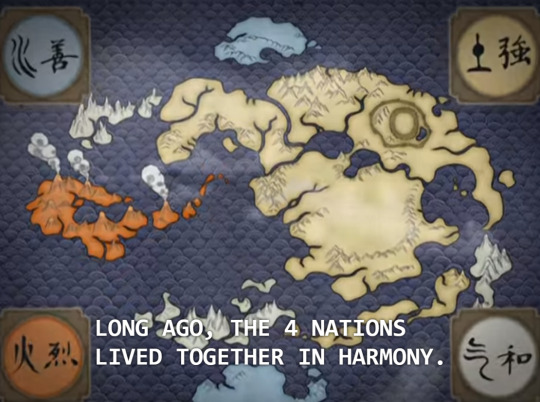
Being in equilibrium lets people love themselves and others. It also comes with accepting diversity and interpreting it as something enriching.
This is why the Avatar is a person bending all four elements. It is because the four elements represent different aspects of the self and bending all four means finding an equilibrium among them. Similarly, all the four cultures presented have positive sides and negative sides and they need to cohexist and to accept each other.
This is precisely why the theme of equilibrium is linked to the theme of diversity. ATLA is a series which deals and promotes diversity. It shows how people can learn from different cultures:
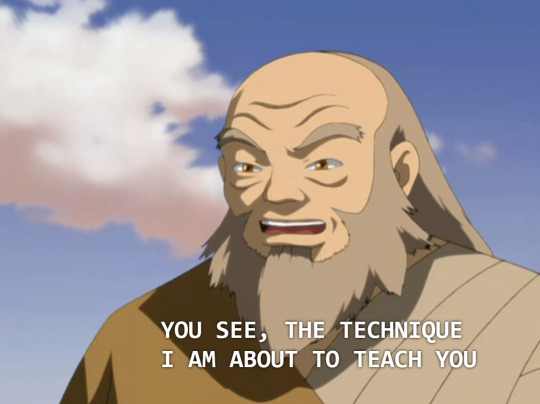
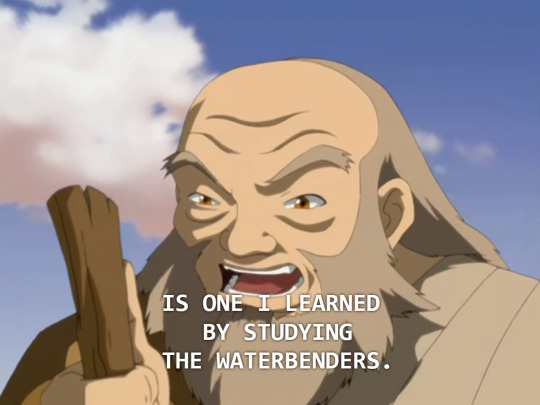
It is not by chance that in the end the characters who lose are Azula and Ozai, who are both out of balance. Azula can’t find harmony inside herself and this is why she loses despite all her talent. Ozai fails to understand the equilibrium of the world. He tries to destroy said equilibrium and this is why he loses his own bending in the end.
Differently, the main characters all find balance within themselves and with others.
Aang is challenged by other bendings. In particular, earth-bending challenges him to face poblems head on (the whole story starts because he runs away after all), while fire-bending challenges his fear of violence and of his own power (and he manages to go all out at the end of the story).
Zuko reconciles the different sides of his complicated legacy and starts respecting other cultures.
Sokka learns that he does not have to change himself to be who he wants to be. What is more, he develops a strong respect for women.
Katara finds an equilibrium between the positive and negative traits of herself and her bending. She also forgives Zuko, but does not forgive her mother’s killer.
Toph must find an equilibrium between her desire of freedom and her wish to stay close to her loved ones. Not to count an equilibrium between her strength and the necessity of accepting help.
When it comes to Tdp, it is more difficult to discuss themes because the series is not over.
That said, I think that an important theme (probably the main theme) is this:
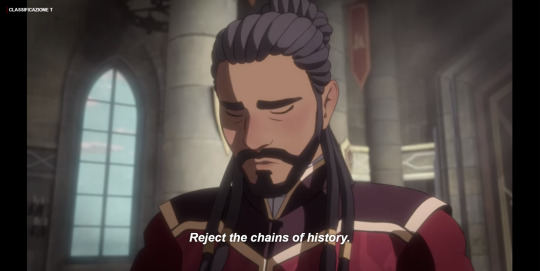
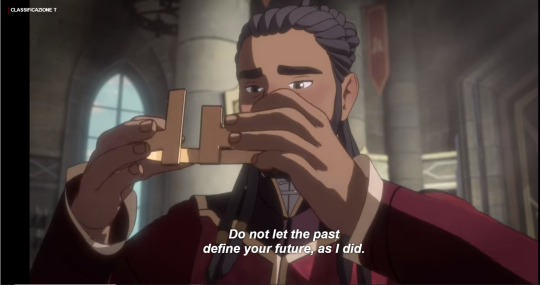
This is because the characters keep repeating it. The idea is that people must be free from their past. They must know about it and they can learn from it, but they should ultimately not feel bound to it.
This is why Ezran chooses to be a peaceful king, while his father was a warrior. This is why Callum decides he will still be a mage despite being a human. This is also what we see at play in the dynamic between Viren and his children. On one hand Soren has had a positive development because he broke free from his father. On the other hand Claudia is spiralling because she can’t.
This theme is expressed through the arcana of the sky. After all, it is not by chance that this is the arcana the main character connects to and which is embodied by Zym himself.
In short, Atla is about bringing back an equilibrium which went lost, while Tdp is about overcoming the status quo to create a new world.
Despite this difference, this does not mean that the main theme of one series is not present in the other as a secondary theme/personal conflict.
For example, Aang’s final choice is ibetween killing Ozai and finding another solution. He even asks past avatars and they all tell him to kill Ozai. However, Aang in the end chooses not to and stays true to his own philosophy (which shows how learning from other people/cultures does not result in erasing one-self/one’s culture).
Similarly, Zuko too is a character who breaks free from his father’s mentality.
At the same time, Tdp too, like Atla, shows different cultures and the importance to learn about them.
When it comes to this, we can see how the two series make a similar use of another narrative element aka the worldbuilding.
WORLDBUILDING
The two series’ worldbuildings have clear similarities. In both universes there are different kinds of magic linked ot different elements. What is more, these types of magic are connected to different cultures and embody different values.
In Atla we have:

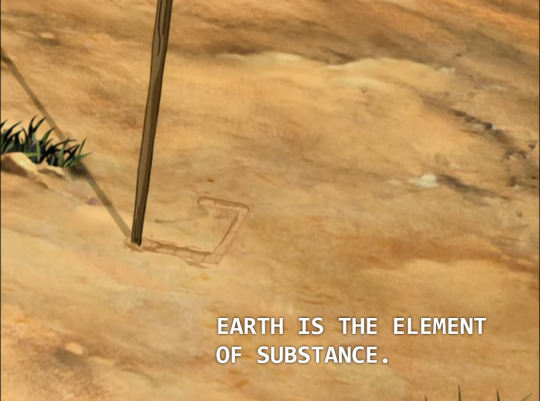

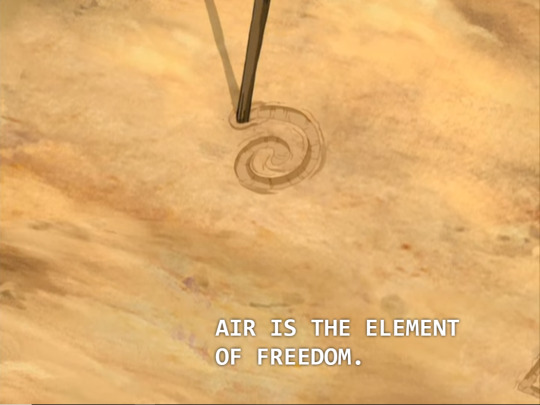
In Tdp we have seven kinds of magic, but I will mostly comment on the four we got to know the most up until now.
The Sky Arcana symbolizes freedom:
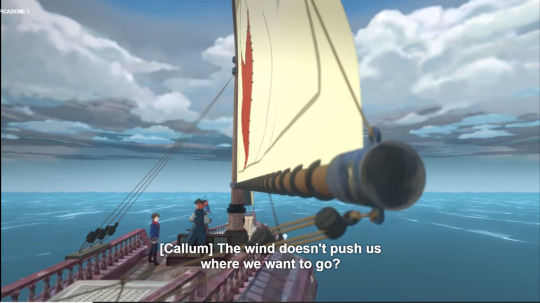
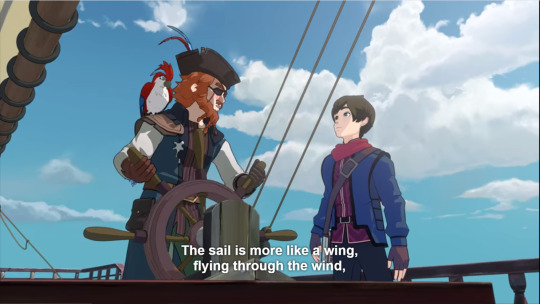
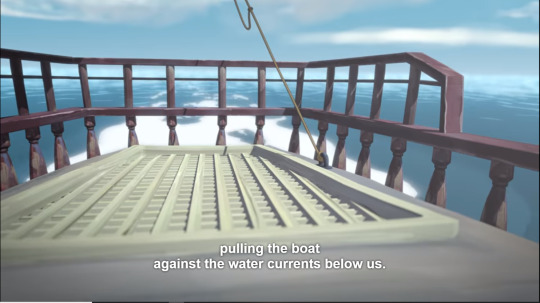
It is the ability to act without any constrictions from your surroundings. It does not mean that you should ignore them, though, but rather that you should use them to go where you want to go. This is why people should not just follow air-currents, but they should be the sails and use the winds to go where they want. This is just anoter way to express the main theme of the story, as I have stated above.
It is possible that among the negative traits of the sky culture there is the tendency to become selfish/act in a whimsical way. I think that this is well conveyed by Nyx and by the Sky Elves being among the members of the Dragon Guard, who ran away.
The Sun Arcana symbolizes honor and purity to the point that it can purify Dark Magic. However, this obsession with purity leads to see the world in black and white and to become self-righteous.
This is why the queen of the Sun Elves dies after all. And it is Sol Regem’s discrimination and rigidity, which led to him losing his sight. What is more, the loss of the sight for a Sun creature is a pretty karmic punishment. Finally, it is interesting that he used to be the previous Dragon King. The fact that he is not anymore shows how such a narrow mentality can’t help in the construction of a new world.
The Moon Arcana is the opposite of the Sun one. So, while the Sun is about revealing the truth behind appearances, the Moon is about illusions. The moon culture celebrates illusions and appearances both in a positive and in a negative way.
Moonshadow Elves can make use of appearances both in how they trick their enemies’ senses and in how they trick themselves:
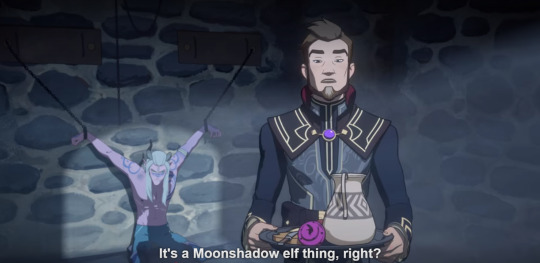
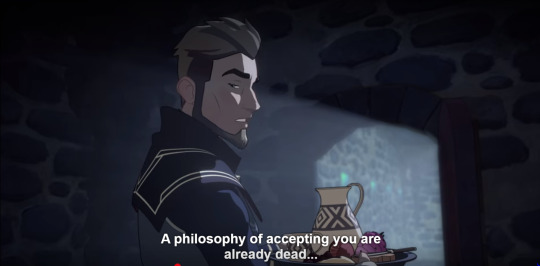

Because of illusions they can dominate their fear. However, this has also a negative aspect:

Moonshadow elves are asked to repress their fears and to feel shame for it. Similarly, they give the way things seem too much importance. This is at the root of what happened to Rayla’s parents and to Rayla’s herself. Because of a simple suspect of betrayal, they were erased. Again the cancelling magic is particularly powerful because the Moonshadow cultures gives so much importance to appearances. Think about what an enemy could accomplish if they were given access to a village where nobody could see them.
Finally, there is Dark Magic, which symbolizes many things.
First of all, it symbolizes the difficult relationship humans have with nature. On one hand they need to use natural resources to survive and to fight natural forces. On the other hand this kind of exploitation knows no bundaries. What is more, it gives people the feeling everything can be obtained easily and that there are no boundaries. As it was shown in Claudia and Viren’s arcs, this creates a lot of negative consequences for both the dark mage and the others.
As one can see, the different approaches have both positive and negative aspects and they need to balance each other out. Finally, Tdp, like Atla seems to have a character, who will master more than one element:
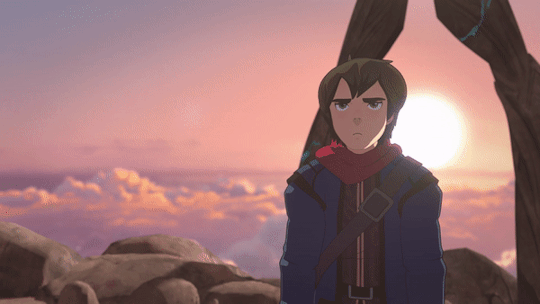
Personally, I am not a fan of this hypothesis and I think this is an instance where Tdp should try to be different from Atla.
In Atla, the concept of a person mastering all four elements was in the premise of the series itself and was used intelligently. Aang is a protagonist who does not want to be an avatar and his arc is to accept this part of himself. It is about finding an equilibrium between who he is as a person and his role. Moreover, the fact that he is the avatar ends up creating conflict, instead of solving it. Because the avatar exists and is an air nomad, the Fire Nation destroys the Nomads without second thoughts. In short, being the avatar creates problems to Aang as a person.
When it comes to tdp, I would prefer for different characters to show the potential to connect to different primal sources. It would be interesting if the main characters ended up connected each one to one or two elements. For example, let’s think how interesting would be to see Rayla connect to the Arcana of the Ocean since she is scared of water. Or Claudia become connected to the Sun Arcana, so that she can purify herself from Dark Magic. Or Ezran to the Earth Arcana, since he has affinity with animals. Soren has trouble with illusions, so it would be very interesting to see him struggling with the Moon Arcana.
In short, there would be a lot of potential to such a scenario, instead than having one single character being the one connecting to many elements. It would make Tdp more of a coral story and I think that would be more unique and interesting.
That said, I am open to see how the whole matter will be trated by the story itself.
These thoughts lead us to the last section of this answer.
CHARACTERS
As said above, Callum might end up having a similar role to Aang. There is also the fact that both start the story by running away and that both are connected with the air element in their respective franchise. Ezran too has similarities with Aang, given how both are non-violent and are kids who have a great responsibility despite their young age.
Other than this, though, the characters I would mostly like to talk about are my two favourites:
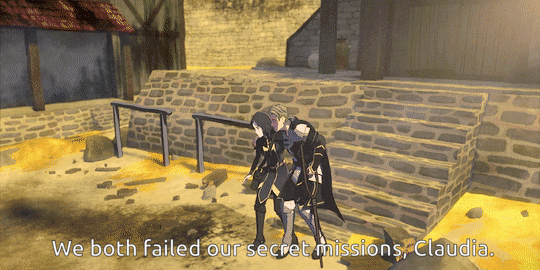
Who I see as basically a mixture between Sokka/Katara and Azula/Zuko.
It is clear that the structure of their arcs is similar to Azula and Zuko’s. They are the children of a main antagonist and they are both going through different journeys. Soren has managed to distance himself from Viren, while Claudia is still loyal to him.
That said, The starting point of Claudia and Soren is different from the one of Azula and Zuko. In Atla both Azula and Zuko start as clear-cut antagonists, while in Tdp Claudia and Soren are immediately given likable traits and presented as manipulated by their father. What is more, it is immediately clear that Zuko will have a redemption arc and that Azula is a more negative character than him. However, Tdp muddles the water more by having a whole season showing Claudia’s positive traits and Soren’s negative ones. That said, the series then uses the next season to make the siblings exchange roles. So Soren learns from his mistakes, while Claudia keeps spiralling.
In short, I think that Claudia and Soren are in a sense grayer characters than Zuko and Azula, at least in how they are presented to the public. This means that both couple of siblings have a similar degree of complexity, but that Tdp plays with the viewers’ expectations more than Atla. Or at least, I have this impression.
That said, both Claudia/Soren and Azula/Zuko explore similar themes and show the struggle of kids who must emancipate themselves from their father. It also shows the damage bad parenting can do (even if Viren is definately a more complex character than Ozai).
However, I would argue that Soren and Claudia also share common traits with Sokka and Katara.
I think that the similarities between Soren and Sokka are striking and clear. Both want to make their father proud, but they lack qualities which are celebrated by their respective parent/society. Sokka at the beginning lacks the physical strength and experience to be recognized as a fine warrior. Soren instead lacks the ability with magic and book-smart, which is appreciated by Viren.
Interestingly, they are opposite plays of toxic masculinity. Sokka tries to live up to an idea of masculinity he lacks only to discover that his strengths are his most “feminine” (culturally speaking) traits. Soren is a character who embodies a toxic idea of masculinity, but still feels unsure and unhappy despite it. It is not by chance that he deep down wants to indulge in activities, which let him show his sensitivity like poetry, for example.
In short, Sokka and Soren might superficially appear as opposite, but they are nothing more than the same concept expressed through two characters having opposite superficial traits.
Finally, both Soren and Sokka are often used as comic relief and this helps the public to like them and to connect with them.
Let’s talk about Claudia and Katara. I would say that, ironically, Claudia is a deconstruction of Katara. By this, I mean that Claudia and Katara share many traits. Both are children who are traumatized by the loss of their mother, for example. What is more, they have reacted to that loss by trying to keep the rest of their family together.
We see multiple times how Claudia is desperate to keep her father and her brother close and she tries to mediate between them.
Similarly, Katara, after Kya’s death, took upon herself the role of “heart” of the family and took care of her brother. She also shows anger towards her father for living, when they meet again in book 3.
Katara is a character who loves deeply and is highly empathetic and Claudia is the same. She is very sensitive and is genuinely sad when she has to tell Callum about his father’s death.
That said, the traits that are shown positively in Katara are deconstructed in Claudia. Katara and waterbenders in general, for example, are said to be able to think outside the box and they turn their weaknesses in strength (their whole fighting style is to turn defense into attack). This is the same principle behind Dark Magic and it is how Claudia justifies her use of it to Callum.
Even more importantly, it is Claudia’s love for her family and to an extent for her community, which leads her astray. It is telling that the Dark Magic starts to corrupt Claudia not when she uses it to attack her childhood friends, but when she heals her brother. Similarly, her hair becomes whiter not when she helps Viren in his plan, but when she resurrects him. In short, she spirals more and more when she uses healing magic. This is interesting if we think about how much Katara’s healing abilities are seen as a positive thing and as a symbol of her nurturing personality. Katara even resurrects Aang when Azula kills him at the end of season 2, after all. That occurrance is definately not framed as a negative thing.
What I am trying to show is that Claudia is an example of a character where those positive traits Katara has are shown as negative because of various reasons. This does not really mean anything by itself because the two characters are in different series, but it is still an interesting idea.
These are my main thoughts on the two series! Thank you for the ask!
34 notes
·
View notes
Text
Why Eremika is amazing (part 2.)
Hello ! I promised a long time ago to make a following of this eremika post , so I apologize for time it took but it’s finally here ~ (however don’t expect to a lot of thing since the essential has already been said in the beginning, actually).
3. An universal POV on love, beauty beyond cruelty

The "Cruel and beautiful" Mikasa’s maxim is at the epicenter of SnK. As many metaposters have already presented that, I wouldn’t go back in length on why it is (but just recall the fact that it’s important the most “universal” axiom of SnK is being done through eremika’s prism). Imo, this principle is to link with another idea that has circulated throughout the story : does life in a cruel world has a meaning ?
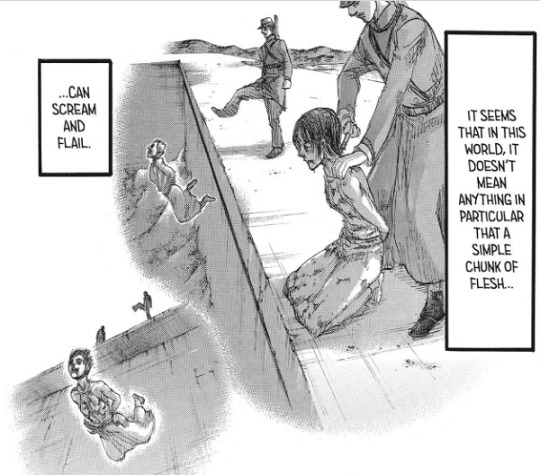
This part of the world, the one with hazardous deaths and merciless of titans / enemies, does represent the cruel side. The cruelty is to be found in the absurd and the chance, the fact that some survive (the case of Floch in particular after the attack carried out by Erwin) and others die, without there being no justification to give of it.

But what is the beautiful side of such a world, to which Mikasa’s referring when she’s thinking of Eren ?
Well, again it's quite sparse / interpretative (that's also why this post is a struggle to write), but this answer has a relation with the fact that narratively, the connection between eremika and the world is strong.
This is carried firstly by the place of main character of Eren and especially the fact that each of his actions has a major impact on the whole world currently but also because the relation eremika is surrounded by reflections, and by plot relevance around the world.
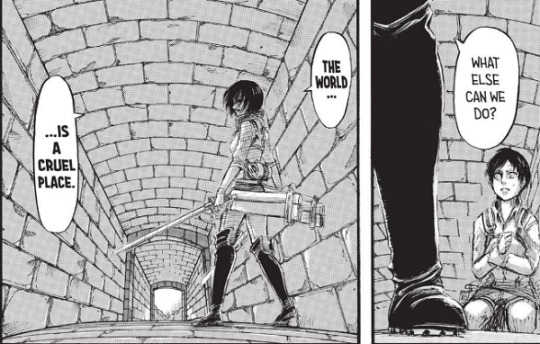
The reason I'm led to think that is the Eren and Mikasa’s moment at chapter 50 which may prefigure many things, and which are still accurate imo, especially with the coordinate. The first time Eren was able to activate coordinate was because of his desire to protect his loved ones, and especially at that moment, Mikasa. This is also highlighted by Eren’s memory who opens the chapter :

To go back on the said moment, it's interesting to observe a small detail in the animation, but which got its importance, that when Eren is feeling that his power doesn’t have any meaning since he still not able to save his parental figure (his mother, then Hannes) and realizes they're doomed, the brightness of the environment gradually decreases as if to suggest the world’s darkness, its cruelty in short.

Then Mikasa reminds him of the second facet of her maxim, through the memory of the scarf moment : “Thank you for being with me, for teaching me how to live, for wrapping this scarf around me.” It's also interesting to note that the perspective is essentially centered on Eren at that time, both on the side of the darkening world and the discussion with Mikasa since even the memory of the scarf that she evokes is drawn from his point of view:

Anyway, what I wanted to say is that this moment is especially important because of the embodiment of human natural sympathy it makes. Yes the world is cruel, there is non-sense and absurdity behind everything for which men struggle (Eren struggled to control a powerful force, to be worthy of representing humanity’s hope and it’s meaningless because Hannes still died and still they’re all doomed). But the natural sympathy that there is between men which is able to make a boy gives his home to a girl he doesn’t know for none other reason than this sympathy, is something beautiful and meaningful enough. So the beauty correspond at the meaning one can give to life, in the sense of a connection with humans and humanity itself. It’s the connection within humans as something warming
Like Mikasa’s maxim (”cruel but very beautiful”), though cruelty is present at first, the beauty of the world ends up prevailing over it since the environment after this memory, is illuminating again :
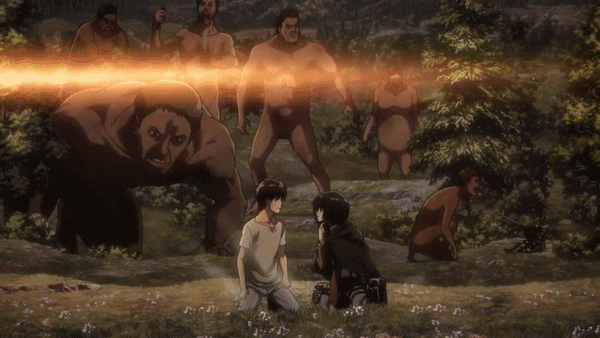
What makes this relationship universal is also that, narratively, the fact that Eren and Mikasa manage to share this moment literally saves everyone (Eren manages to engage the coordinate and they can all leave) (we can also notice in the animation above, that through this light increasing / decreasing we're going from a focus on eremika to a focus that illuminates the rest of the environment).
The theme of beauty also joins the theme of humanity in this sense. To resume on Arendt on which I had finished the last meta, the definition of humanity is the recognition in a community of living, that is to say the feeling of belonging trough this community, to the world, among similar persons. And in this imo, eremika represents all forms of love in SnK.
There was a meta about love as a lifeline a few months ago (but unfortunately I can’t find it again, if it recalls something to anyone don’t hesitate to tell it !), which was particularly accurate with this. Love, in its particular form, provides access to a universal form of love, and is the only way that can truly reverse the course of events and the cycle of hatred / enemy / resentment / war etc.
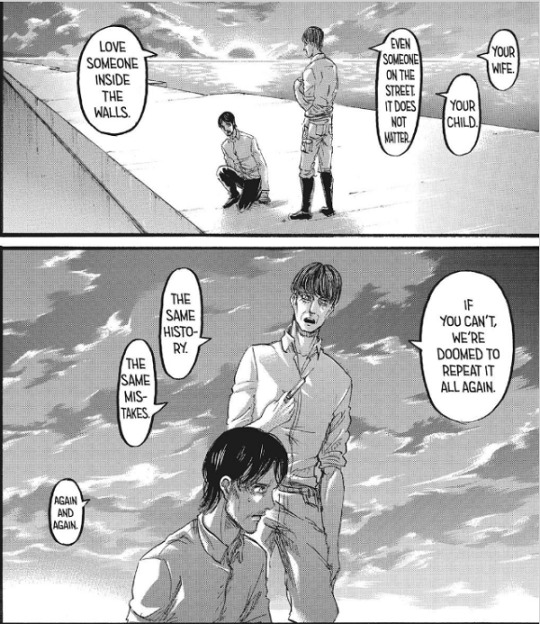
As a matter of fact, currently in manga’s action, things are at a reverse stage at this level. Mikasa and Eren have both given up the warmth of the scarf symbol and failed to communicate, coming up on a quiproquo (Eren believe Mikasa don’t see him more as a family debt, and Mikasa believe Eren had always hated her). And as a fact even though actions are supposed to go in the sense of saving loved ones, results aren’t very positive: chapter 50 -> everyone is saved ; chapter 124 -> the rest of the world in exchange of four people lives.


Well I’m not saying either eremika is a holy grail and at the very moment they’ll finally truly communicate on their love, entire world and SC and titans and Ymir will be saved, it would be way too sweet. But I do think a moment of exchange with their parallel (Mikasa and Falco especially) and the coming back of scarf moment may have an impact on the closure of the issue with world’s annihilation currently.
Well, this meta was pretty far-fetched and not very “limpid”, I probably wouldn’t have published if it wasn’t for the so kind people who asked it, so here it is ! I just hope it’s not too much disappointing compared to the delay you’ve wait for it ahah, and in any case, thank you very much for all the sweet words and encouragement ~
#shingeki no kyojin#snk#attack on titan#AoT#shingeki no kyojin meta#snk meta#attack on titan meta#aot meta#shingeki no kyojin analysis#SNK analysis#attack on titan analysis#AoT Analysis#eren#Eren Jaeger#eren yeager#Mikasa#Mikasa Ackerman#eremika
77 notes
·
View notes
Text
It has to be done.
It Has To Be Done
This was the excuse Dean gave to Cas. It's also just one more variant on the Absolute Worst Thing it's possible to say on Supernatural.
"I did what I had to do."
"I don't have a choice."
“It has to be done.”
In a show where Free Will is the ultimate ideal, and where giving in to Fate is not only the ultimate failure, but has consistently been framed as a metaphor for depression, for giving up, for despair and even suicide, I'm incredibly disturbed by some things I've read today about Dean's state of mind, his intention to lock himself in the Ma'lak box, and Sam's actions undertaken to stop him from this.
I’m putting this under a cut, because it actively discusses depression and suicide, so please bear that in mind before reading. The TL;DR of what’s beneath the cut is my view of how the narrative has condemned Dean’s current mindset about his only choice being to throw himself into the deepest part of the ocean to suffer eternal torment, locked in a box with the metaphorical representation of his own worst opinions of himself, is being used as a direct metaphor for depression, self-harm, and suicide. So if this is triggering, please read at your own risk.
The show has even consistently put the actors’ own Meta Narrative Terms into the characters' mouths--
Sam: You have one card today! But we'll find another tomorrow. But if you quit on us today, there won't be no tomorrow! You tell me, uh, you don't know what else to do. I don't either, Dean. Not yet. But what you're doing now, i-it's -- it's wrong! It's quitting! I mean l-look what just happened. Donatello never quit fighting. So we could help him because he never gave up. I believe in us, Dean. I believe in us. Why don't you believe in us, too?
They essentially had Sam deliver the Always Keep Fighting motto to Dean here. Because like Cas's experiences with the Empty, like Dean's experiences with the Mark of Cain and then the Darkness luring him with the promise of complete annihilation of self and the end of suffering, like Demon!Dean unable to feel either pain OR joy, THIS IS ALL A METAPHOR.
For anyone who feels that Dean is actually CORRECT and RIGHT that this is the only way, to lock himself into eternal torment at the bottom of the ocean with the metaphorical representation of his daddy issues and self-worthlessness, I humbly suggest you might wish to seek professional help. Because that's just... horrifying.
Yeah, I confess, I am a Dean girl. But in the sense that I actually care about him, and want the best for him more than I need for him to be Always Right, you know? Because... he's definitely not right here.
He’s incapable, trapped in his current mental circumstance, of seeing the light. The same way he was incapable of seeing the reality of his situation while he’d been trapped in the eternal loop inside Rocky’s Bar. The view out those blurry windows was only the darkness of the inside of his own mind, you know? From where he’s sitting, there isn’t even metaphorically a door. Trapped inside the Ma’lak box already even in his own nightmares. That’s not a mindset from which one can find the way out on their own.
That’s depression.
I also do not see anything Sam has done in the last two episodes as abusive or in any way infringing on Dean's agency. Because people who are showing all the symptoms of suicidal depression don't actually HAVE agency. And I would've been DISGUSTED with Sam if he'd sat back and just accepted Dean's choices and actions over the last two episodes.
Everything Dean has done in 14.11 and 14.12 (and even trapped inside his own mind in 14.10, where Sam and Cas had to navigate a space that was identical to The Empty, and served the same function metaphorically as Dean having been "locked away" into this tiny box in an endless loop unable to truly find happiness and only surviving disconnected from reality in every way) has functioned as a metaphor for depression, hopelessness and major warning signs that people who are seriously contemplating suicide exhibit. Sam's reactions bear this out, and everything he does follows the playbook of someone who truly cares about Dean literally helping talk Dean down off the ledge.
Sam saw into Dean's head in very literal ways in 14.10. He heard Michael-- the embodiment of the worst thoughts trapped in Dean's own head-- attempting to convince Dean to give up because they were all doomed by his monsters coming to kill them all anyway. And that NEARLY happened, yes! They were tricked into bringing a monster into the bunker, who let in a flood of other monsters to attack the unprepared hunters. In a horrifying turn, Jack burned up a piece of his own soul to save them all, which allowed Sam, Cas, and Dean working together to lock Michael up, albeit in a temporary fashion.
But Dean is absolutely convinced that the only way to stop Michael from escaping again is to lock himself up in a magical box and fling himself to the bottom of the ocean. At this point, my brain refuses to let me go on unless I add the line, "And I would've gotten away with it too, if it weren't for you meddling kids!"
The plan Billie gave Dean isn't some sort of Safety Measure in case of Last Resort. It was portrayed as the easiest way out. It was the whisper of the void stroking Dean's brow and telling him he can lay down his burden and allow himself to quit fighting, to quit trying, to give up on everything he's ever stood for. It's HORRIFYING.
It’s horrifying in the same way Sam nearly giving in to Death in 9.01 was. Horrifying in the same way Dean going all kamikaze for a large part of early s3 was, knowing he was doomed to die he was reckless with his own safety.
Sam immediately started researching on ways to save Dean and defeat Michael, but Dean refused to even engage with that rational course of action. He'd already succumbed to the seduction of annihilation. He flat-out LIED to Sam about why he was leaving-- I mean yes, he did wanna visit Mary, and the side-trip to see Donna was nice, but Donna did call him out on his motives for seeing her. So did Mary, who was suspicious of Dean from the outset the way Donna had been. But it was that stupid awkward hug Dean gave Sam that he CORRECTLY INTERPRETED as a sort of farewell. It was a WARNING SIGN that Dean was hiding something incredibly dark and selfish, and self-destructive.
What Sam did as a result was ENTIRELY UNDERSTANDABLE. He didn't try to confront Dean directly. He treated him like a man on a ledge. He began setting up safety nets, alerting the people with Dean to his fragile state, even urging Cas not to confront Dean directly yet despite telling him-- because they are WORRIED about Dean-- what Dean's plans were.
This is what family who loves you DO when their loved one shows all the signs of severe suicidal depression.
This is what Cas did for Dean in 12.09, where Dean had textually been suffering torment “worse than Hell” in that prison, to the point where he’d dealt his own life away with Billie to help him and Sam escape. Cas took matters into his own hands, killing Billie to spare Dean from his own stupid choice. Because it was a stupid choice.
You don't just... go along with the depressed person or validate their suicidal ideation, you know? What madness is this that I've actually read with my own two eyes that Sam should've just... actually helped Dean effectively and metaphorically commit suicide? On what planet has this ever been something the show has said would be okay?
Everything Sam has done from that point forward-- from tentatively agreeing to stand by Dean at the end of 14.11 right through punching him in the damn face at the end of 14.12-- has been a textbook approach to supporting someone suffering through a major depressive episode.
His acknowledgement and surface level agreement with Dean in 14.11 was literally his foot in the door. If Sam had attempted to defy Dean in that moment, Dean would've packed up his box and left, and his final memory of Sam would be this feeling of betrayal. Sam needed Dean to accept his presence in order for him to have any hope of getting through to Dean.
I know from personal experience that depression lies. The hopelessness isn't real, but there's nothing more unhelpful in that state than the people around you just agreeing with you as if it is. It's a difficult balance to strike, though, between sympathizing with the depressed person and gently beginning to peel back the curtains they've shrouded themselves with, and revealing the hope and light outside. Just ripping it all down is just as horrific and untenable as letting the person suffocate inside their own hopelessness. So Sam takes the seat beside Dean and begins slowly chipping away at the literal tomb he's built for himself.
Sam tries logic, while Dean faces the horror of what he's condemned himself to in his nightmare-- clawing up the wall of the motel room enclosed in chains (the motif on the wallpaper formed a cage of chains around Dean, while Sam was framed in the doorway of light. Dean tore up his hands clawing at the wall in his subconscious drive to escape the fate he’d built for himself, and yet he keeps his back to that lightened doorway which is the obvious route to escape. He can’t even acknowledge it yet because he’s still bound in those wallpaper chains.
Sam tells him it's likely that Dean wouldn't die, that his suffering would never end, and that what he's suggesting isn't an escape from that torment that he's actually hoping to find. And Dean's mind seems to see this as fact already, demonstrated as exactly that in his own nightmare just moments before-- he's alive in that box that's already developed a crack where the water is drip drip dripping in. He knows the box cannot hold, and that he will not die as a result.
He was terrified of "drowning" inside his own mind when Michael took him over before, yet he thinks the rational solution now is to drown himself literally and in reality, for all time. I mean... this is not the thinking of someone who is behaving rationally. He's chained to his fear, and that fear is dictating his actions now. Should his loved ones simply accept that Dean is right and encourage him to self-destruct? Especially when we've been discussing all season how Dean's possession by Michael, his experiences drowning, his metaphorically locking Michael away, and his earlier drive to kill Michael before he could destroy the universe ALL as metaphors for Dean's own self-worth, his Father Issues, his guilt, his suppression of his whole self?
Dean’s been sharing reminiscences of childhood for a while now-- his story about Winchester Surprise with Mary, his confession to Sam that John had often sent him away and his fear ever since that Sam believed Dean had just abandoned him during those times are clearly the sorts of Dark Thoughts that are weighing on him now. Knowing just a little of the inciting factors we’ll see play out in 14.13 are giving me serious hope that Dean will find the catharsis he’s been unable to get regarding some of his long-standing, incredibly complicated feelings about his father. The fact that Dean will go in thinking his Deepest Desire (a phrase he’s used before to describe his temptation to self-annihilation, in 11.13) is to rid himself of Michael, but apparently manifests John alive instead is extremely telling since Michael has been a direct John parallel all season long.
But back to all the other metaphors and parallels that Dean’s possession by Michael has been used for all season long. How does all of that careful construction of mirrors collapse just because Sam punched Dean in the face? Suddenly none of that stuff matters because on a surface level, Sam Did A Mean Thing. That must be ABUSE! TERRIBLE! Because honestly that sounds just as nihilist as buying into Michael's deluded lies, which preyed on Dean's fears to sustain his belief in them.
Yeah, Sam realized he'd reached the end of his rope in letting Dean continue walking down the self-destructive path. Throughout the episode that Ma'lak box just dragged along behind them, always visible in Dean’s rear view mirror, silently reminding us of what would inevitably await Dean if he couldn't find a way off that path. It functioned as the specter of death, the shadow, boxed up so you couldn't see the Ma'lak box itself, but you just know it's right there under that thin surface.
Sam and Cas both tried patience. They both explored other metaphorical alternatives to active suicide. The situation with Tony Alvarez turned out terribly, but it was just one consequence of their previous mistake in letting soulless Donatello read the demon tablet. If they hadn't done that, then Tony would've fully awakened as a prophet instead of being driven to madness by the half-awakening he was doomed with because of the state they left Donatello in. And sure, they couldn't have foreseen that, but in the end the solution wasn't just to kill Donatello, but to find a way to save him.
Dean had been CONVINCED that "letting him go" would be the solution, and he acknowledged that parallel to himself in text.
Castiel: The natural order's been upset. Perhaps Donatello's state has created a prophet who's not only premature... but malformed. Sam: Okay. But if Tony was wired wrong because of Donatello, then the next prophet will be wired wrong, as well, and then the next, and the next and the -- the next and... How do we end this? Dean: You know how.
But from his position, Donatello was unable to save himself, despite his mind even unconsciously trying to do so. Just like Dean alone can't see a way out of his situation, which is why he NEEDS the help and support of his loved ones. Team Free Will, they're just better together.
This is the narrative the show has been building on in one way or another since the start. When they go their separate ways, they doom themselves. When they stick together, they at least have a fighting chance.
And after Cas provided the help to heal Donatello and break the demon tablet's hold over him, performing what they'd all previously believed impossible, Dean couldn't face that his own metaphor for what he wanted to do himself had completely fallen apart. He was already shaky on wanting to go into that box. He'd essentially spent the entire episode goading Sam into talking him out of it.
He doesn't WANT to go through that eternal torment, but he legitimately is unable to see another way out. Like Donatello's muttering what amounts to a cry for help through the next prophet, Dean was doing the same by harping on the "it's the end of the line!" nonsense that Sam repeatedly had to ask him to stop. He was also goading Cas with the "if you were my friend" garbage, challenging him to do something to stop him. Cas turned it around in the most painful way possible, laying out on the table the ONE THING Dean had said he was unable to do-- say goodbye.
Dean’s harping on the whole “last hunt, end of the road” stuff was the equivalent of a depressed person talking about themselves negatively as if there was something “honest” about romanticizing their depression. It’s fatalistic, and does nothing to help recover. It’s wallowing.
In episode, this was directly contrasted with Nick, who insisted his emotional pain had been the result of his wife never getting justice for what happened to her, but when faced with his wife actively holding out her hand and telling him “this is the way to salvation,” he rejected it, because all he wants now is to drown himself in Lucifer’s false salvation. He could’ve gone into the light, and let go, but he refused. Sam and Cas spent the entire episode trying to break through to Dean and bring him a spark of hope, and he’d been refusing and refusing. Nick was never really sorry. He was only playing sorry. Just like Dean until his final confrontation with Sam, where he finally called Dean out with that exact turn of phrase.
Dean wanted to run away, alone, and off himself. Cas was pressing him into dealing with it, demanding Dean acknowledge what he was really asking for. I think if there hadn't been an attack of Moosus Interruptus there, Dean would've cracked right there in the hallway, but of course they had to save Donatello first, making the metaphor complete.
That left the final confrontation to Sam.
Dean: Well, I would call this a win. Kind of nice. We're going out on a high. Sam: 'Going out' being the operative phrase. Dean: Sorry. Sam: 'Sorry.' How sorry are you? Sorry that you fight to keep Donatello alive, but when it comes to you, you just throw in the towel? Or are you sorry that, after all these years, our entire lives, z-after I've looked up to you, after I've learned from you. I-I-I've copied you, I followed you to Hell and back, are you sorry that all of that -- it -- it -- it means nothing now? Dean: Who's saying that? Sam: You are, when you tell me I have to kill you. When you're telling me I have to throw away everything we stand for, throw away faith, throw away family. We're the guys that save the world. We don't just check out of it! Dean: Sam, I have tried everything. Everything! I got one card left to play, and I have to play it. Sam: You have one card today! But we'll find another tomorrow. But if you quit on us today, there won't be no tomorrow! You tell me, uh, you don't know what else to do. I don't either, Dean. Not yet. But what you're doing now, i-it's -- it's wrong! It's quitting! I mean l-look what just happened. Donatello never quit fighting. So we could help him because he never gave up. I believe in us, Dean. I believe in us. Why don't you believe in us, too? Dean: Okay, Sam. Let's go home.
When the show is actively putting Always Keep Fighting language into Sam's mouth, is there really another way to interpret any of this than as a direct depression metaphor? Dean yells that he has tried everything. But... he’s literally tried NOTHING. He hasn’t tried one single other thing. He hasn’t even cracked another book or done a jot of research beyond the one Billie specifically put in his hands. Dean is just as trapped as Donatello was before Cas intervened to heal him. And he’s so trapped that he actually BELIEVES that he’s exhausted all his options. Because he can’t even begin to SEE any other options with his back turned toward the door focusing only on the wall he can’t seem to scratch his way through.
Suggesting that Sam was violating Dean’s agency in this circumstance is akin to suggesting that Sam violated Dean’s agency in forcing the demon cure on him, or akin to suggesting that Dean violated Sam’s agency when he shoved Sam’s soul back inside him. And yet... Sam and Dean both expressed gratitude after the fact, acknowledging that they couldn’t see just how badly they each needed help while in their respective compromised states. And that’s exactly the same framing they’ve given us to interpret Dean’s current mental status.
Sam had reached the end of his rope, and out of frustration and his own sense of failure to appeal to the part of Dean that should want to survive, he broke down himself. It hurt to watch, both for Sam’s sake because of the frustration of desperately trying to save someone intent on destroying themselves, as well as Dean’s sake because OUCH to have to face his self destructive impulse head-on like that... Sam’s punch hug forced that confrontation in ways none of their words had been able to.
It was the equivalent of Dean brushing the board game off the table in 7.21 and yelling at Cas that he wasn’t sorry, but only playing sorry... It was the sort of shock and shakeup Dean needed. He needed to see how badly his current state was affecting the people he loved, and the people he was deludedly trying to protect through what he felt was his own self-sacrifice. He needed to see first-hand just how wrong an assumption it was that they’d be fine if he went through with this effective metaphorical suicide.
and then when Cas returned, Dean confirmed that he'll let them help him, but he's holding that box in reserve.
Dean: Maybe Billie's wrong. Maybe. But I do believe in us. I believe in all of us. And I'll keep believing until I can't. Until there is absolutely no other way. But when that day comes -- if that day comes... Sam, you have to take it for what it is -- the end. And you have to promise me that you'll do then what you can't do now, and that's let me go. And put me in that box. You, too.
“Maybe Billie’s wrong,” is the metaphorical equivalent of “Maybe this depression is lying to me...”
He's still struggling with this big depression metaphor, but he has stepped off the ledge. He's acknowledged that there might be another way, even if he doesn’t really have much hope that he’ll be able to find it. But he’s accepted Sam and Cas’s help to guide him there.
And it's only one small step in the right direction, but it is a step. I'm betting it's a step big enough for at least a few of those books on Billie's shelves to have begun rewriting themselves. Because when has this show ever taught us to accept that giving in to Fate was the Good and Correct choice?
#spn 14.12#oh DEAN#suicide mention#spn 14.10#spn 14.11#spn 14.13#spn 7.21#spn 9.01#spn 11.13#spn 12.09
131 notes
·
View notes
Text
House of X #1: The Complications of Trees
Ok so, with that Intro Out of the Way, Here’s me talking abt the intro image of House of X #1 for 1500 words :| :| :|
For Context:

Father and Mother
Ok let’s get into it. The central image of page 1 is of 3 pillars of light pouring into the cavern from above, triangulating a Tree of Roots. Right off the bat this is Chthonic: “Chthonic”(pronounced thahnik, tho if you wanna sneak a barely perceptiple “ch” at the front of it, I’ll respect you u_u) means “of the underworld” or, less ominously, “subterranean”, and here we are not only literally in a cavern, but dealing with a tree made out of the subterranean PARTS of a tree; its roots. Strange eye-like fuschia circles seem to look on from the cavern walls, pupil-less, insectile, and, to me, especially reminiscent of the eyes of the Ohmu from Nausicaa of the Valley of the Wind. For comparison:

Strange orange chrysalis-fruit grow at the bottom of the root tree(whether from it or placed near it isn’t clear). From these chrysalises hatch the X Men, beginning with Scott and Jean, to be welcomed by Xavier.
There are clear mythic elements to this image. Representing the X Men first with Scott and Jean, the prototypical m/f couple of the series, is an obvs reference to Adam and Eve. Having Xavier standing above them, looking on, welcoming them to life within a plant-space, a garden, obvsl casts him in the position of God, The Father, in the abrahimic creation myth and suggests his responsibility for this event, even though they are hatching from the eggs(?) growing on the tree, and not being made by him directly.
It isn’t only abrahimic, though; those Chthonic elements again. Gaia, the Greek Mother-Earth, was at once human and Earth; her anatomy analogized to physical geography. Caverns are enclosed interior spaces; wombs are enclosed interior spaces; caverns are wombs. Xavier’s costume furthers the Chthonic connection through oblique reference to other subterranean Greek deities: he is dressed is a form-fitting black jumpsuit. I cant speak to how Hades was colored in the classical era, but in the modern day he is typically depicted in blacks, dark-greys, and dark or grey blues, matching Prof X’s costume here. This visual connection to Hades goes further(though I can see this one being unintentional; Plouton’s epithets arent exactly common knowledge): X wears what looks to be a portable version of Cerebro which completely covers his eyes. A common Epithet for Hades/Plouton is “The Unseen One”; Xavier’s SEEMING sightlessness calls this to mind without being a direct reference, or undermining the larger visual(which his being invisible would certainly do). And we could take that further to an even more oblique, even subtextual, play with inversion¶dox, with resolution of opposites, with things being both themselves and their negation: Sightless, Xavier Sees; Seen, he is Unseeable. The Chthonic staging and symbolism, pairing Xavier with this environment, strengthens the Hades connection(Hades is the “Lord of the Underworld”, Xavier is in an Underworld place, in a “Lordly” position), and conversely the parallels are strengthened further by knowledge of Hades/Plouton’s Marriages. Originally he was husband to Demeter, variously etymologized as Mother of the House or “Great/Rye/Divine/Earth Mother”, seen in the subterranean setting, and then Persephone, a Goddess of Spring, Harvest, and Vegetal Fertility, which we see in the seeming-birth-giving tree. And the mythic symbolism of THAT goes further still, given how common humans and animals growing from plants are in myths all over the world. The image is layered in creation-myth, birth-imagery, and the supernatural or superhuman(the last bits resonating, obvsl, with the XMen’s own history&mythology). This works on both an immediate and meta level; not only is this scene taking place within the context of the story Hickman and his team are trying to tell, but it also takes place at the beginning of a reboot of the XMen franchise; in a literal meta sense, this scene is a “rebirth” of The XMen into this new “Dawn of X” era.
Returning to the cavern(but staying with Greek myth, cuz I’m predictable), it potentially presents another mythic aspect, though this is PROBABLY an idiosyncratic read and not intentional. Caverns are dark places; literally the epitome of darkness in the mythic Greek sense through Erebus(non-night darkness, the darkness of deep shadows or caverns), the husband-son of Nyx(Night). Erebus is more than just the son or the husband of Nyx, however; Nyx created Erebus from herself, by herself. In a real sense, Erebus is, simultaneously, apart from Night and a part of Night; Himself and Herself, Darkness and, at the same time, Night writ small. Coincidentally(and apropos for this story), within some Orphic traditions Nyx is tasked with ensuring the passage of divine leadership from one generation to another, and choosing who will lead. Which leads us to...
Ambiguity
Ambiguity cuts through all of this, undermining the notion of clear oppositions; clear beginnings and clear endings. Xavier, small and masculine on the first page, is on the second towering and in a classically feminine pose(I’ve seen this in dance and modeling approx a BILLION times, but I dont know the name of it, and I cant seem to land on a search phrase that’ll get me decent stills of it. If anyone does, or can point me to an instance of it, I’d appreciate having the name so I could search & plop some comparison images in here) which combines with the conflation of his will, the Tree, and the birth above to present him as ambiguously mother and father. While possibly unintentional the same is repeated for the cave itself through the Erebus connection: an underground womb, it is Feminine; a “place of darkness”, of Erebus, it is Masculine. And of course in the earth is where ppl are buried; a place both of birth, and death. Likewise a tree’s roots usually take nutrients from the earth, feeding on decay and decomposition, yet here they do the opposite “fruiting” the X-Men from themselves like moths from a cocoon.
There’s a particularly interesting depiction of X in this two-page spread that, at first glance, is symbolically masculine but, on further thought, I think its very masculinity works to play into this thematic ambiguity. On page 1 a tiny erect person stands before the Tree on a large mound, dwarfed by the uterine tree dominating the cavern&scene. The masculine symbolism of that figure in its context is obvious. However that context also subtly subvert it through a pun. Obvsl I go LOOKING for puns, so maybe this is a wholly idiosyncratic read of it, but part of why the tiny figure reads as masculine despite its lack of definition is the pun in “mound” being popular vernacular for vagina(more specifically the vagina’s external features, and most specifically the mons pubis/mons venus). So the first image we have of Xavier(though we aren’t SURE it’s him yet, or if it’s a man) is of him as a tiny man on a mound; symbolically atop a vagina :| A popular vernacular phrase for the clitoris is “a small man in a boat” with the “boat” also being this anatomic context :| :| Visually, Xavier is a Clit :| :| :| Again: Masculine and Feminine combined rather than opposed, and it goes all the way down(yes this wording is both awkward AND intentional u_u u_u).
His ambiguity crystalizes and embodies the general ambiguity of the scene: eggs that are chrysalises; new-born adults; a Tree that is only roots, birth underground in a place of burial, Light in a Dark Place, and mammals born through insect-imagery by a tree. This last image, the central action of the two pages(beyond the plants-fruiting-animals stuff mentioned before), contains so much ambiguity just on its own: Plants typically possess both ”male” and “female” parts(neither of which honestly mirror the animal counterparts for which the words were coined); the XMen “hatch” from chrysalises but chrysalises arent eggs they’re a stage in transition from one form to the next; they are human, but the process of their “birth”, with its eggs and cocoons “fruiting” from a plant, is everything BUT mammalian and human.
This ambiguity extends to the moral realm. Large, bald heads, masks and helmets, eggs, sightless or hidden eyes, dark colors --especially black and purple(the fuschia circles, but also some lighting effects)--, gender ambiguity, pod-people; all of these are also conventional signs of the nefarious and villainous. While we know the X Men and Xavier as heroes, and while the event is presented as unquestionably mythic perhaps even miraculous, the moral quality of it, and of Xavier’s wider actions, isn’t clear. But again this is an ambiguity of inclusion rather than one of either/or; it merges the masculine and feminine, rejecting the boundaries set between them, rather than asking which is which. So I take this moral ambiguity similarly; not as a question “is Xavier right or wrong?” but as suggesting there are both morally “right” and morally “wrong” elements to these events(and to the comic series proper), existing side-by-side.
All of this ties into the theme of cycles, and from there into repetition and rebirth. A Cycle has phases which can seem to be in opposition(day and night, for instance) but which are actually part of a larger whole, leading one to the other. Death and Life are one such seeming opposition; living things die, an end for them, but that end feeds other living things. Life feeds from itself through death, to perpetuate itself in new beginnings. Appropriately this ties back into the mythic elements: the best guess as to what the Eleusinian Mysteries --dedicated to the Chthonic deities Demeter, Persephone, and Plouton-- were about was the descent, stay, and ascent of Persephone to and from Hades; in other words the cycle of life, death, and new life(though there doesn’t seem to be agreement over whether this was new life or an afterlife in the scholarship. Given the much under-discussed, and under-recorded, Greek belief in reincarnation, it could have easily been either).
All of which raises a central question: Is Xavier Banging that Tree :| (I kid, I kid! What can I say but: Comedy demands -___-)
#HoXPoX#House of X#HoX 1#Charles Xavier#The X Men#Hickman et al#Greek Myth#Abrahimic Myth#analytic posts
2 notes
·
View notes
Text
My Hero Academia Chapter 239 Review
youtube
If the definition of “mixed bag” needs a photo, this chapter would do it justice. From what I assumed is the end of the arc, the battle of two villains have reached to the conclusion; one in which challenged Game of Thrones Season 8 pacing. By that, I mean, “What a rush;” literally. While the future content could be interesting, the execution here was underwhelming, unearned, and possibly damaging.
I assumed this chapter is the end of the arc with the inclusion of Spinner as the narrator. It began with him narrating, so ending it seems fitting. Jumping ahead, he wasn’t much of a character here, which is a shame, considering his background can be relatable. I mean it has some elements, but he’s cool being a lackey, so problem solved. Couldn’t even get a fight of his own, let alone a victory. Oh well; it’s time for the showcase of Shigaraki’s earth shattering attack.
The way how it setup leave me an impression that everyone in Meta Liberation Army will be wiped out. As sad that may sound, let alone ridiculousness on the power level, I’m ready to accept it. Who knows. It could have a cool sendoff. Honestly, I vision in my head how this would end well for the team; maintaining their pride and die with their fellow leader. If you are unfamiliar with one of the major cons of Game of Thrones Season 8, this chapter would be a great example.
Once Shigaraki does the attack, as expected, it can destroy a city. It may not be the entire landscape, but it’s good enough to intimidate anyone. Plus, large destruction equal powerful is the concept this series follows, so welcome to Shounen. The visual is pretty cool though, largely on the emphasis of Shigaraki’s joy of destruction. Redestro tries to dodge it, but soon overwhelmed to the point you would think he has died. Instead, he has lost his legs since it was touched earlier. That could leave room for sinister end for him. Remember, villain versus villain concept can allow killing in a dark, cruel way, like how Toga did it to Curious. This could make Shigaraki scary as a person and how would he make an example out of anyone who dares to start a feud.
If only…
Instead, Redestro surrenders to Shigaraki. Okay, that would have been partially fine, though he comes off as a wimp and not as prideful as he started off in the very beginning. Sort of betraying a character in a way. But, it doesn’t end there. Not only he surrenders, but he gives his army to the League of Villains. Why? Because he has been enlightened by Shigaraki’s desire for destruction. He has shown great example of Destro’s ambition; the one who embody freedom itself. But, you started a war based on it, and because you saw a clear picture, you instantly become someone’s tool? Oh, Gigantomachia and Spinner are practically convinced by Shigaraki’s prowess; thus, he and the League have gained tremendous power. All because Deku have to get a power that will make the Sage of Six Paths proud.
Let’s start with the positive. The League of Villains have gained crap load of arsenals in a matter of a day. They went from zero to well, not zero. They have the lab with multiple High-Ends, Gigantomachia, special bullets to damage quirks, an army, and money. Not to mention, they are powered-up. More importantly, they are seen as a threat, so for the future content, it could lead to interesting possibilities. If anything, it’s the idea of what lies ahead that helped this chapter more so than the content itself. It’s good to theorize, but when look at the execution, it’s pretty poor.
First of all, the rebound for the League is unbelievable. They became a major threat at a rapid rate, only because some of the heroes, largely on Deku, will soon become overpowered themselves. This wouldn’t happen if the balance was justified, but instead it falls under the same problem as Naruto. There, the protagonist had grown powerful, so it’s logical for the antagonist to grow even more so within an arc. Hell, one was done multiple times within an arc like some bargain sales.
Second, Redestro practically became something that rhymes with ditch in a matter of a battle. Where did it indicate he wanted to be free as if to say, “He is suffering long enough with Destro’s ideal that he wants someone to take over.” When all things considered, he pulled the “coolest guy ever,” only for the villain’s side. What happened to that prideful self; an image that wouldn’t be converted drastically. He was seriously hell bent on his pride, but now, bow down because of reasons? I felt more sympathetic or attached to a villain from another series who I don’t think ever given a name yet struck me with feels.
Look, it could have worked, but it was incredibly rushed; much similar to that character who turned evil from Game of Thrones. More exploration and time would help a lot. Even if he gets a flashback down the road, the image didn’t support the cause, so it felt like a revision was done. Kind of like how Overhaul doesn’t show much of germ phobic. Hell, he probably get talk no jutsu again, but this time by Deku. On the plus side, at least we will get more of him later. Bonus, the army is no longer fodders for the villain; now, they’re fodders for the hero. What an honor.
My main pet peeve is how it essentially made the arc underwhelming and in hindsight, needlessly dragged on. This could have been done within a volume; hell, the one that is out right now in Japan. I know we have gotten backstories and developments of some, but in terms of battle, it did nothing but stretch time for this type of conclusion. It’s even funnier to realize how Curious is the only named casualty and defeat out of everyone. I guess we can’t have two female within the League. Kishimoto will be so proud.
It’s sad though, because this arc should have been “different.” It involved with two villains that have nothing to shy away from going ultra-violent. It started off promising with Toga’s victory. After that, it’s the same old stuff with some limbs loss. Yeah, I know we have people dying, but in a dusty way. You can lie to your kids and say, “They went to the next dimension.” And the fans said this was very dark. Shigaraki’s backstory, sure, but what backstory isn’t dark in any series these days.
Perhaps the chapter can be seen as bad or even damaging to the arc itself. It’s the potentials for future content that would leave a better impression. The visual is pretty good, but the rest is questionable. One would ask, “But wouldn’t you complain still if Redestro was killed instead?” The answer is, it’s always been a double-edge sword, and both are sharp. I don’t know if Kohei was told to rush this arc, but this should have been much better. I don’t know if the arc ends here, but I’m ready to go back to the hero’s side. Probably…
0 notes
Text
Mr. Osomatsu: Six Faces, Six Decades [Part 2]
Mr. Osomatsu, a revival of Fujio Akatsuka's classic Showa-era comedy, Osomatsu-kun, has made big waves both in Japan and in the West. Revolving around the daily lives of a group of unemployed sextuplets, the new anime series has done a fine job in changing with the times. While other franchise reboots have stayed a bit too true to their roots to reach a contemporary audience, Mr. Osomatsu is boldly in touch with its new generation of viewers. It's a comedy series that tackles touchy subjects with conviction, but holds enough self-awareness to poke fun at itself in the process. At times crude and unrefined, at others strikingly perceptive, Mr. Osomatsu is a hearty belly laugh that many have found enjoyment in.
Before delving into this feature, I'd recommend reading Part 1, where I discuss Osomatsu-kun as well as the cultural climate surrounding its style of humor. This half of the feature is intended to be somewhat of a comparison piece, looking at how Mr. Osomatsu has revamped the franchise's formula to better suit the tastes of a contemporary audience.
Fast forward 25 years from Osomatsu-kun. In contrast to the economic boom of the 80s, Japan has now entered a recession. In addition, its aging population continues to grow, while many young adults face challenges finding employment and romantic relationships. As Japan’s people continue to live amidst these rough times, humor becomes an effective tool at tackling the country’s touchiest subjects. As anime such as Sayonara Zetsubou Sensei have proved in the past, a touch of satire and black comedy can go a long way.
While Osomatsu-kun’s approach to humor was a product of its era (lengthy slapstick skits with wacky, absurd tangents), Mr. Osomatsu director Yoichi Fujita chose to adapt the manga into a format closer to other skit-based, meta comedies. Fujita had served as the series director for a large chunk of Gintama’s anime adaptation, and many of his comedic sensibilities can be seen throughout Mr. Osomatsu. However, this is not to say that Mr. Osomatsu is simply another Gintama clone; rather, the staff at Studio Pierrot were respectful of Osomatsu-kun’s legacy. Both writing and animation teams were asked to check out specific episodes from Osomatsu-kun (1988) for inspiration, cementing Pierrot’s decision to respect the franchise’s forefathers.
Throughout the first season’s run, Mr. Osomatsu made the occasional nod to plotlines from Osomatsu-kun, with one of the more notable examples being the Wacky Races homage. At the same time, Studio Pierrot crafted a unique identity for Mr. Osomatsu by drawing upon the characterization and comedic stylings of modern anime. To that end, Mr. Osomatsu is both a celebration of the old and the new – and is one of the few comedy anime that has found commercial success in that marriage between past and present.
One of the primary alterations Pierrot made to Osomatsu-kun’s formula was in the casting. Iyami and Chibita were relegated to side characters and the Matsu brothers were given the spotlight once again. While Osomatsu-kun effectively treated all six Matsu brothers as a homogenized entity, Mr. Osomatsu was quick to build each brother into his own memorable character. A far cry from the bratty, rambunctious youths of their golden days, now each Matsu is a fully-grown adult NEET in his 20s.
The title character, Osomatsu, is perhaps the most basic of the bunch. Despite being the eldest brother, Osomatsu is very self-centered and insensitive to his brothers’ troubles – traits that certainly run in the bloodline. When he’s not staring aimlessly at the ceiling, Osomatsu can be found squandering his time away at pachinko parlors and race tracks. So much for setting an example for the younger siblings!
The next in line is Karamatsu, a self-appointed ladies’ man who quite literally wears himself on his back. Karamatsu is a narcissist by nature, sporting shades, a leather jacket, and his own theme song wherever he goes. He frequently tries to play it cool and smooth for the mythical “Karamatsu Girls” in the audience but unfortunately neither his brothers nor anyone in the anime seems to care. When Karamatsu spouts a line that he considers to be magnificent or intelligent (often accompanied by his broken English), he is either outright ignored by everyone on screen or cast into a fiery pit for a slapstick gag. Regardless of how painful Karamatsu’s presence is, he is an inseparable part of the show and is one of the most popular Matsu brothers.
Choromatsu is the third brother, and compared to the over-the-top Karamatsu is more down to earth (relatively speaking). Choromatsu fits the mold of an otaku to a T and is often found obsessing over the latest female idols in a frenzied state. His character is intended to be a satire of idol otaku in Japan, but Choromatsu also plays the obligatory tsukkomi (straight man) in many gags.
The fourth brother, Ichimatsu, is a natural loner with a bad case of social anxiety. He keeps to himself and becomes absorbed in his dark, depressing thoughts – with his only friends being the neighborhood cats. Despite that, Ichimatsu still hangs around with his brothers a lot, bickering and getting into fights when there’s an issue that concerns the entire group. Throughout Mr. Osomatsu, Ichimatsu shows the occasional sign of wanting to open himself up to human contact, but his mental health issues often prevent him from doing so. Whether his troubles are played for laughs or a serious examination of an individual struggling socially, Ichimatsu is a character that many audiences found themselves attached to. As a result, he is also one of the most popular Matsu brothers.
The fifth Matsu brother is quite honestly the most difficult to describe. Jyushimatsu has a perpetual smile plastered onto his face and has an undying love for baseball. Perhaps this is why he’s responsible for the anime’s most left-field outbursts and actions. Jyushimatsu just seems like he’s living in his own universe half the time, which may explain why he’s rarely shown to be bothered by being a NEET. He remains cheerful and upbeat to the point where even his own brothers question his sanity. Has Jyushimatsu simply found a way to cope with the dread of being unemployed, or has he truly lost his marbles?
Last but not least is Todomatsu, the youngest brother. Totty acts in an effeminate manner and is very vain, being concerned with his physical appearance and public image. While the other Matsu brothers are borderline hopeless with women, Totty has shown some success in being able to go on dates – albeit as a result of his fake persona. Sadly, jealousy is something that runs in the Matsu family and Totty’s brothers often sabotage many of his attempts at getting the girls. Goes to show that a Matsu brother can’t escape his genes.
In short, the Matsu brothers were meant to embody some of the least desirable personality traits in Japanese society. Yet in spite of all their inadequacies, they collectively managed to garner a huge fan base – many of which were young women, no less! While a character like Ichimatsu was a social reject, many of his fans either found him relatable or endearing. Many perceived his inability to voice his inner feelings and friendship with cats as being moe traits, which is why you’ll find lots of people with Ichimatsu as number one in their hearts. On the other hand, a character like Karamatsu provided some of the best comic relief in the anime through his absurd behavior and hammy lines.
In an industry where anime needs recognizable, visually-appealing character designs and likable personalities to sell merchandise, Studio Pierrot made the right move with Mr. Osomatsu. Although distinguishing one Matsu brother from the next proved to be difficult at the start of the series (due to their appearances being identical aside from minor facial features), their personality quirks were distinctive. Additionally, the occasional focus episode on each brother granted a touch of character development, allowing audiences to connect with each brother on an emotional level beyond what a gag comedy would normally offer.
However, it wasn’t all sunshine and roses for the cast of Mr. Osomatsu. While the Matsu brothers certainly took up the microphone and stole the spotlight, some of the supporting cast received the short-end of the stick. Iyami is perhaps the most notable example, given that he was previously the heart and soul of Osomatsu-kun (1988). The issue with Iyami’s character in Mr. Osomatsu was that he didn’t change, unlike the Matsu brothers. Iyami was still the same conniving conman that he was in Osomatsu-kun. His catchphrase became the bread and butter of his character, and unfortunately defined him as a recurring punchline. As a result, he received far less screen time during the latter half of Mr. Osomatsu’s first season.
Likewise, Studio Pierrot faced a similar hurdle with adapting Chibita and love-interest, Totoko, to fit the contemporary slant of Mr. Osomatsu. While their transition wasn’t as awkward as Iyami’s due to their occasional interaction with the Matsu brothers, both Chibita and Totoko’s personalities were simplified in comparison to their Osomatsu-kun counterparts. Totoko, for instance, was still the same vanity queen as she was in Osomatsu-kun, but her portrayal in Mr. Osomatsu was limited to her fake idol persona. Unfortunately few attempts were made to stretch her beyond that mold throughout the show’s run either comically or emotionally.
With that said, the weakness of the side cast was hardly a call for concern with Mr. Osomatsu. In keeping with the show’s spirit, Studio Pierrot thought up some rather creative ways to make the best of the worst. One of Mr. Osomatsu’s strengths was its awareness of the fact that it was a reboot of a franchise nobody knew of anymore. Case in point, the anime’s first episode kicked off with a scene produced in the style of the 1966 adaptation of Osomatsu-kun, with the characters shocked their show was going to receive an anime adaptation in the year 2015. However, being from the Showa era, the Matsu boys were not accustomed to the style of modern anime, feeling their simple catchphrases would not be enough. Eventually the brothers settled on trying to do an anime in the style of a bishonen idol anime, as they believed it was the best way to market their all-male cast. Unfortunately, their other cast members joined the fray, desperately referencing popular anime from other genres. This culminated in a shameless parody of Attack on Titan and was never brought up again.
This self-awareness would persist throughout the entirety of Mr. Osomatsu, with characters stating that their crude behaviors were going against the wishes of their late creator, Fujio Akatsuka. Iyami even acknowledged that nobody knew his catchphrase and was furious audiences weren’t finding him funny anymore. As such, the anime always had that slight touch of meta humor in its back pocket and even evolved alongside its rapidly-growing fan base to focus on its more popular aspects. One instance of this was when Studio Pierrot included alternate universe skits featuring gender-swapped versions of the Matsu brothers. This “GirlyMatsu” episode was produced in response to the anime’s large female following and translated each Matsu brother’s personality traits into a female counterpart. For example, the idol-obsessed Choromatsu became the fujoshi, Choroko. In short, Mr. Osomatsu’s meta humor was strongly tied to its identity as a malleable franchise that had survived for over half a century.
Amidst all the meta humor, crazy alternate universes, and crude slapstick, there exists one aspect of Mr. Osomatsu that firmly anchors it to its passage in time. The decision to cast the Matsu brothers as NEETs was not simply an aesthetic choice, as certain segments of the show are very upfront about being a wake-up call for the young adults struggling both financially and romantically. While the cartoony depictions and general wackiness are still present, the issues that Mr. Osomatsu tackles are a reality for Japan. This is a major departure for the franchise, as Osomatsu-kun had always used satire to poke fun at less-pressing idiosyncrasies of Japanese culture as opposed to addressing current issues.
Through the skits focused on the mundane lives of the Matsu brothers, we see a lot of their worries, anxieties, and frustrations surrounding their futures come to light. The brothers are all jobless, socially and romantically inept, and waste their lives away gambling, drinking, and looking at pornography. Their characterization alone is a blunt reflection of NEETs taken to the extreme, and the show does not shy away from depreciating the brothers for laughs. Family and friends alike will often call them jobless virgins, with the Matsus themselves internalizing their own hopelessness. However, in keeping with their unique personalities, each brother deals with these social pressures differently. For instance, Ichimatsu constantly refers to himself as “human trash” and chooses to isolate himself as much as possible to avoid being hurt. On the other hand, Karamatsu and Choromatsu simply escape reality by becoming enveloped in their fake narcissist and idol producer personas, respectively.
Interestingly enough, Mr. Osomatsu never proposes an idealized or romanticized solution to the brothers’ struggles. This is perhaps a result of the anime’s skit-based format and only minor threads of continuity, making Mr. Osomatsu more of a humorous portrait of contemporary NEET life, rather than a social discourse on it. Nevertheless, it’s a very effective one, and is in many ways a more powerful statement than some anime attempting to be dramatizations of reality. Mr. Osomatsu effectively uses satire and black humor to bring to light the shortcomings of its society.
In closing, the Osomatsu franchise has had one hell of a ride for the past half century. What started as a slapstick gag comedy has now evolved into something that creator Fujio Akatsuka could have never predicted. While respecting its roots, Mr. Osomatsu has achieved both commercial success and worldwide notoriety all thanks to Studio Pierrot’s willingness to adapt the franchise’s material into something more befitting of a contemporary audience. With six unforgettable faces and a second season underway, who knows where the Osomatsu name will end up in the future?
Let us know your thougths about Mr. Osomatsu in the comments below!
----
Brandon is a Features Writer for Crunchyroll and also a freelance writer about anime. Follow him on his Twitter at @Don_Don_Kun!
0 notes
Text
Scripting the Other
Open call for wrong works: Scripting the Other SCRIPTING THE OTHER is a pavilion (online exhibition) in the third edition of The Wrong - New Digital Art Biennale (Nov 1, 2017 - Jan 31, 2018). We're calling for works that explores the notions of the Other and Otherness in online, performative scripting and writing. The work should preferably have some live, dynamic function - e.g. through (ambivalent) interaction with user/audience, communicating, streaming, mashing textual-visual sources and feeds, live coding, stream-of-consciousness-or-data writing or scripting. The idea is to use internet as an instrument of the Other, and antitheses to the echochamber of the self, and set up an interface towards it, as if communicating with or observing an undefined, unknown or uknowable entity, operating system, or AI. The exhibition examines text and text-visuals in meeting with an inordinant 'Here Comes Everything', the role and protocol of author, reader - entangled and undermined. If possible, the exhibition will take form as an embodiment of the Other with the works selected being incorporated within it. Works for the exhibition should be made for web browsers. Deadline: 15. September 2017 Contact: [email protected] Scripting the Other is part of the project Other Writing initiated by Noemata and funded by Arts Council Norway. Noemata is a production site for digital and netbased art affiliated with PNEK (production network for electronic art Norway). Notes 'Live coding' meaning programmable live and that the writing process is made visible and part of the execution, or put in another way, that it includes a visible operational meta-level where the text is coded/generated. 'Ambivalent interaction': To challenge and undermine ideas about communication, meaningfulness, identity, noise/signal, writer, reader, and the like, in relation to text. For example, the audience/browser should ask questions about what this text _is_ - is it communication? do I write? who's writing? do I read? both? - and at least to conclude that the text has its proper life and symbolically approaches the Other (the opposite to self and identity). Ambivalent interaction is a metaphor for the way we operate on the internet - how internet opens up for a game of identity, partly necessitated in the face of an overwhelming and frenzied 'other', something which in turn has created a feverish market for simulacra, representation and imitation - think of social media acting as a 'big data' simulacrum, and 'selfies' acting as a kind of mockery mirror. In reality, this kind of identity has an equivalent vast, dark side, 'other', as a reaction, since our default state on the internet is both anonymous and transparent (two antitheses of identity). 'The Other' as a writing process, and the category 'Scripting the Other' as an aggregate term for text or text-visuals not immediately categorizable: "The concept that the Self requires the existence of the Other ... Lacan associated the Other with the symbolic order and language. Levinas connected it with the scriptural and traditional God, in The Infinite Other. ... Ethically, for Levinas, the "Other" is superior or prior to the self; the mere presence of the Other makes demands before one can respond ... Levinas talks of the Other in terms of 'insomnia' and 'wakefulness'. It is an ecstasy, or exteriority toward the Other that forever remains beyond any attempt at full capture, this otherness is interminable (or infinite)... it has not been negated or controlled. ... The "Other", as a general term in philosophy, can also be used to mean the unconscious, silence, insanity, the other of language (i.e., what it refers to and what is unsaid), etc." -- https://en.wikipedia.org/wiki/Other SCRIPTING THE OTHER will explore through such a hybrid reading-writing process an integration to a wider operational identity, perhaps with a reference to analytical psychology and its individuation process if we look at the unconscious as 'the Other' and internet again as the unconscious through big data which we are interacting ambivalently with. If we associate 'the Other' with the symbolic order and language, and assume that the unconscious has a language, we can treat the internet with its endless stream of data as a stream-of-(un)consciousness and 'Other' in the meeting with the browser, identity and traditional reader and writer. A "nihilogue" (e-lit term introduced by Espen Aarseth, 1997) - a text which has neither origin or impact (author or audience), for everyone and for no one, in the sense that it is automatic or unconscious, and corresponds approaching the 'the Other', an existence evading control, and in a stream which is continuously and increasingly diverging; can be compared with a 'default state network' in the brain, whirring constantly, a dream without a dreamer. The reader/audience might interact with the script, either in plain text or commands, and the script will process the input and respond in different manner similar to the role as 'other'/unknown/internet; that the input for instance can be filtered through social networking, search, databases, algorithms, providing 'resonant' answers, i.e. the answer is a kind of reverberation of the situation where the context plays part and changes (as is often the case on the internet - everything is context, everything is protocol). The scripting might serve as communication between transmitter and receiver, where the aspect of 'Other' is put in the background and intervens more sporadically. These modes can be compared with the Other as 'insomnia', 'wakefulness', 'ecstasy', 'presence'. The scripting might have a relatively pure and transparent interface, a writing surface, in the meeting between the transmitter and computer/internet/recipient, where these different roles avoid defining. As mentioned the writing surface can provide a sort of resonance space between identity and 'other', as the scripting uses the input to process textual mass from the net, and thereby intervening in the writing process which might reveal an associative-resonant meaning. The scripting can itself start this process and the user act as a resonant search machine for it. Links https://www.facebook.com/groups/thewrong3/ https://www.facebook.com/thewrongbiennale/ http://noemata.net/ https://www.facebook.com/noemata.net/ http://dlvr.it/PfTFq6
0 notes
Note
What do you think of Mori's role in BSD?
Hello anon!
I have talked a little bit of Mori and his ability here.
As far as his role in the story goes I think he embodies two things.
1) The mafia.
2) The past.
1) As far as the first point is concerned I would like to highlight the symbolic role of the mafia in the story.
I have talked a little bit about it in the post I linked above:
At the same time, on a macro level, the story needs a resolution of some type between the Mafia and the Ada since it is obvious that the two organizations are linked because of the past of many characters in the ADA being linked to the mafia somehow. Dazai, Yosano and Fukuzawa all have a past which involves one or more members of the mafia, for example.
And here:
The mafiosi are who the detectives could become if they were to completely lose themselves in their most violent and darkest parts, while the HD are who the detectives could become if they were to embrace simplicistic ideals over people. This is also why this arc has been particularly hard on Kunikida since among the members of the ADA he is the one who risks to do so the most.
In other words the mafia is nothing more than the societal structure which organizes and takes charge of those people society doesn’t care about. The mafia symbolically represents the part of the city nobody wants to aknowledge and everybody fears. In other words, it is some kind of macro-representation of a collective jungian shadow.
The tripartic alliance perfectly illustrates this point:
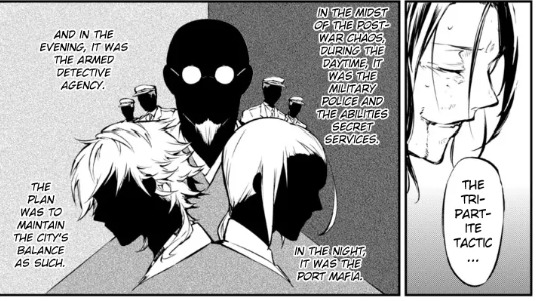
The alliance is based on the collaboration among three organizations each one associated to a specific time of the day.
The Military Police and the Ability Secret Service are associated with daytime because they represent the accepted authority and law. They are who the citizens look up to and they must adhere to the rules and the laws.
The ADA is associated to the evening because they are an in-between the day and the night. They want to preserve the law and try not to act outside of it, but also see its limits and use loopholes and bend the rules to help people. They can look both at the government and at the criminal world critically, but they have also been shown to work well with both.
Finally, the mafia represents the night i.e. something which is totally not bent by the rules of the day. They are that part of society which was in chaos after the war and over which Mori seized control.
The members of the mafia are basically people society gave up on and who have no interest into being re-integrated in it:
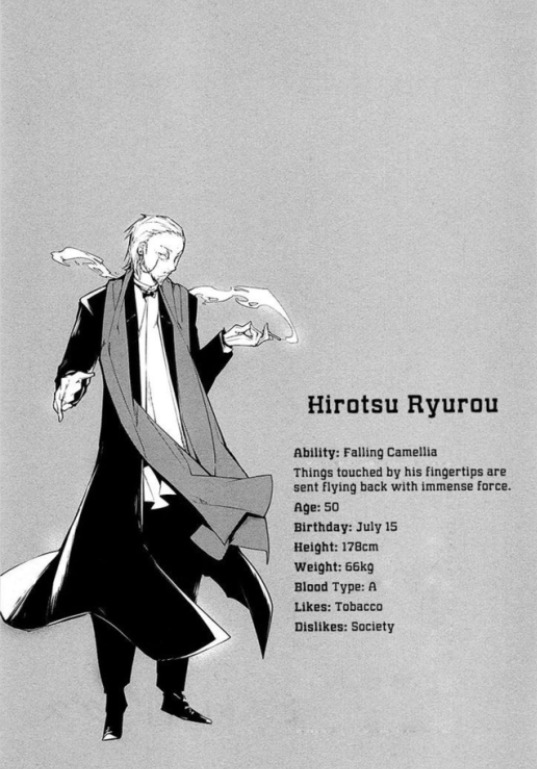
Let’s highlight that Hirotsu has “society” among his dislikes and he is one of the oldest members. In short, he embodies why a person prefers spending their whole life in a criminal organization rather than in the respectable world. It is because of a dislike for it.
As far as Mori is concerned he says so:

He claims to love Yokohama even with its dark side and it seems that he has taken upon himself the difficult mission to organize this side of the city. However, the interesting thing is that, under his leadership, the mafia and the underworld have basically become nothing more than a mirror of society and the same abusive structures and dynamics if not worse have been established. However, this is also why Mori has been so successful.
Mori is loved and accepted by his subordinates specifically because he gave the mafia members the illusion that they can be a society on their own. He gives rules to the criminal world and organizes it, so that it can be more tolerable. After all, it is not by chance that the people most loyal to Mori are those who have experienced a much more chaotic world:
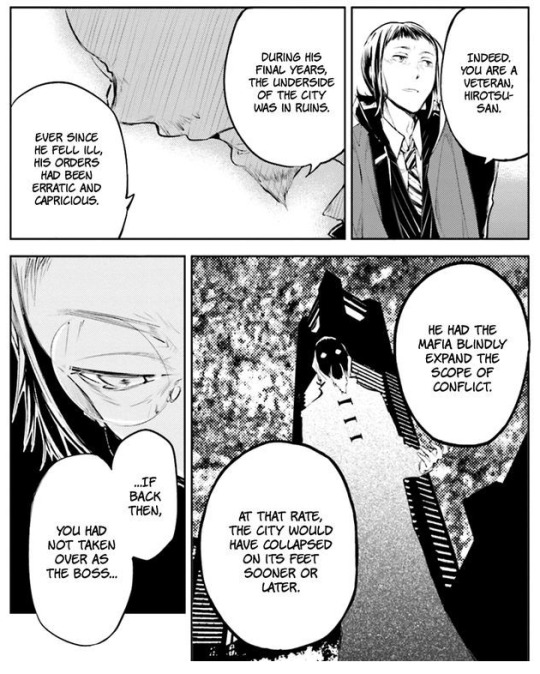
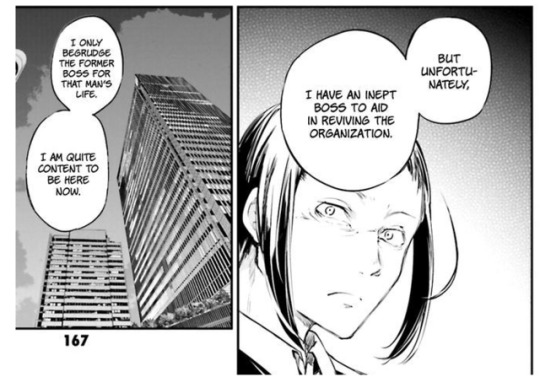
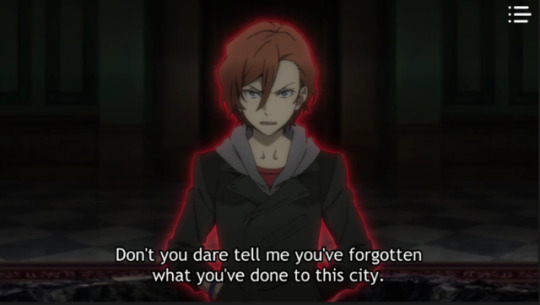
At the same time, these people are also somehow convinced of this:
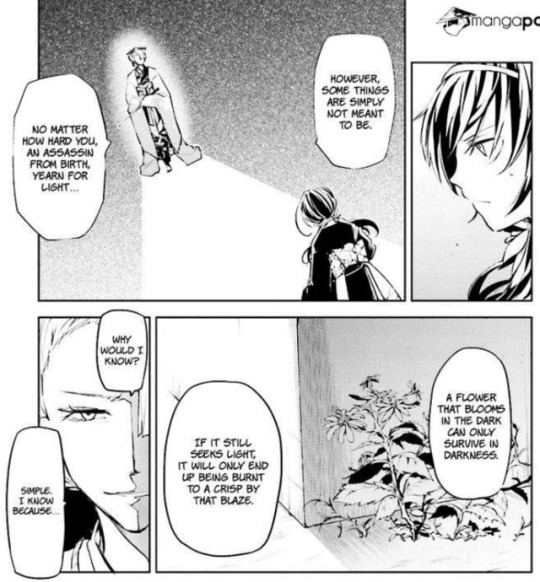
They have accepted the world of the night as the only world where they can live and prefer this world to have some kind of law, so that they can feel more like people.
However, here lies the contradiction of the mafia and of Mori. All in all, this regulation of the world of the night is also what lets this world survive and favours specific dynamics from which both the governement and the mafia gain something, but which have negative impacts on the individual.
Kyouka’s case is a perfect example of that.
All in all, Kyouka is a victim of both the government and the mafia. On one hand the government chose to use her as a scapegoat to protect itself. On the other hand the mafia weaponized her ability.
She is also an example of how these two realities which should stay separate have actually built a twisted and beneficial relationship. The government can use the mafia as a scapegoat and a place where they can recycle individuals they don’t really want to take care of, while the mafia takes these individuals and turns them into pawns.
To summarize, the mafia represents that part of society which should remain hidden and is accepted as long as it does. Mori is the one who made this possible by transforming the underworld in a society he administers and in this way he makes it tolerated, but also makes sure that the true problem behind these people who have not a place to belong is never addressed nor solved. So, in a sense, Mori is weaponizing a social problem.
2) I have talked about BSD addressing a generational conflict in the meta on the Guild Arc whose link is above.
One of the reasons why the integration between the two organizations and in general among the different sides of Yokohama is so difficutl is not only because of the characters’ personal problems (unwillingness to cooperate, old grudges etc.), but also because the younger characters who have the best chance to change things find themselves in a flawed system they inherited by older characters.
All in all the series explores the theme of having to deal with the consequences of one’s parents’ actions (both negative and positive) and the characters all need to make themselves independent from parental and mentor figures, so that they can become their own people.
As that meta makes clear Mori is one of the representative of the old generation. He has contributed to the current peaceful situation Yokohama is in, but at the same time he has also been exploiting other people’s weaknesses.
Simbolically, it is interesting that his ability is the same, but also almost the opposite of Kyouka’s aka the character I used in the already mentioned meta to explore the theme of facing a parent’s legacy.
Both Mori and Kyouka’s abilities consist in guardian entities who protect their host, but who also exhibit specific personalities.
As it has already been stated Demon Snow represents Kyouka’s parents’ legacy which is ambiguous and with which Kyouka has to reconcile.
Elise is instead a child because symbolically she represents Mori’s tendency to manipulate and exploit the weak. She can also represent Mori’s own emotional side which is underdevolped like a child is.
Demon is initially presented as a dangerous and ruthless monster, but turns out to actually have good intentions and to be willing to help Kyouka, while Elise is introduced as a harmless little girl, but she is later revealed to be a violent ability.
This also fits with how Kyouka and Mori themselves are introduced in the series. Kyouka appears as a cold assassin, while Mori as a friendly doctor. However, these appearences are soon subverted.
However, the most interesting thing when it comes to this foiling is this:

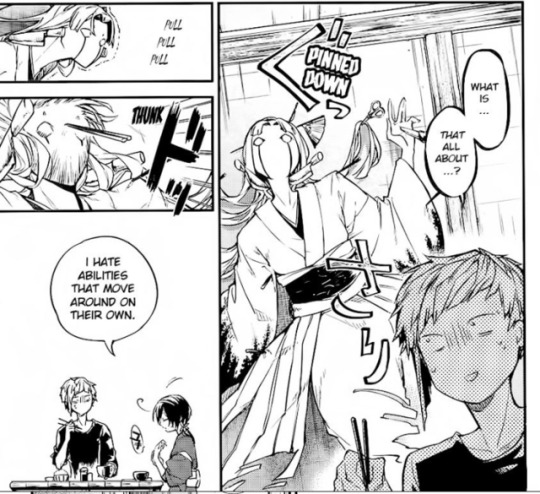
Mori has perfect control over Elise to the point that even her current tantrums happen because Mori wants her personality to resemble Yosano’s, while Kyouka can’t influence the Demon’s behaviour and has just recently gained enough control to use her ability without her cellphone.
This perfectly shows where the two characters are in termsof control over their lives and the things around them. Mori is an adult and one of the most influencial people in the city, whereas Kyouka is a child who has been moving from a horrible place to another until she found someone willing to help her.
All in all, Mori is linked to these two concepts and I am expecting for him to be overcome in the end precisely because he embodies them too much. On one hand I think the conflict between the mafia and the ADA should be settled, but it seems difficult as long as Mori is around because his involvement in traumatic episodes concerning Dazai and Yosano’s pasts makes so that him being around makes so that the conflict is always there even if asleep. On the other hand the younger generation should surpass the previous one and do better and this symbolically overlaps with exponents of the old generation leaving the scene either because they die or because they lose power.
Specifically, I think Mori is bound to play a role in Dazai’s arc because of the two of them being obviously foils, as both Fifteen and the Dark Era show.
Mori is who Dazai could have become if Oda’s death had not made him realize something important:

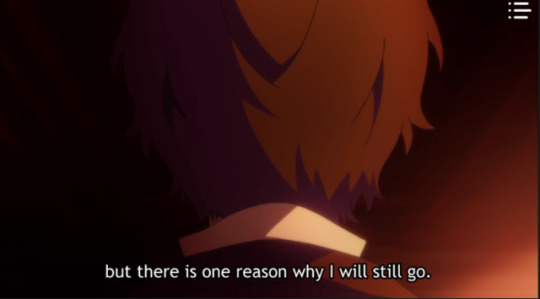
“He’s a friend”
Dazai is as ruthless and as manipulative as Mori is, but he is not ready to give up a genuine and healthy connection he has made and in this way he both learns and shows that he is able to think outside of an utilitaristic mainframe, while Mori is not able to do so. He probably cares about Dazai to an extent, but he won’t develop this emotional attachment into something healthier.
That said, Dazai’s arc in the manga might very well involve him becoming someone completely different from Mori and so overcoming the influence the man has had on Dazai’s life once and for all and solving his personal conflict with the mafia in a positive way.
As a matter of fact, Dazai’s past with the mafia is brought up pretty often and he has left some important relationships unsolved. The one with Akutagawa is probably the most important, but there are also the ones with Chuuya, Koujo and Q who all knew him and have shown different levels of resentment over him leaving the organization.
At the same time, Dazai is trying to recreate a new version of the soukoku partnership he had with Chuuya and in this way he is stepping into Mori’s shoes as the one continuing the “tradition”.
However, I think that shin soukoku will actually answer Mori’s question:
“Only a diamond can polish a diamond. I wanna see for myself if that is true”.
The problem with Mori’s attempt is that it was purely utilitaristic, while I think that Dazai might be willing to make Akutagawa and Atsushi work together both because he needs them to fight against a strong opponent, but also because he might be trying in this way to fix the damage he has made to Akutagawa. It is still a pretty indirect and manipulative attempt, but at least Dazai is recognizing that there is another level to people other than their strengths and weaknesses. And it is probable that Natsume, by talking about diamonds, was referring to people’s interiority rather than to their abilities. In other words, Mori might have attempted to find an answer to Natsume’s words by onlu combining the ability of two people, while Dazai might find a better and more meaningful one by having his mentees develop psychologically thanks to each other.
These are my thoughts so far!
Thank you for the ask!
102 notes
·
View notes